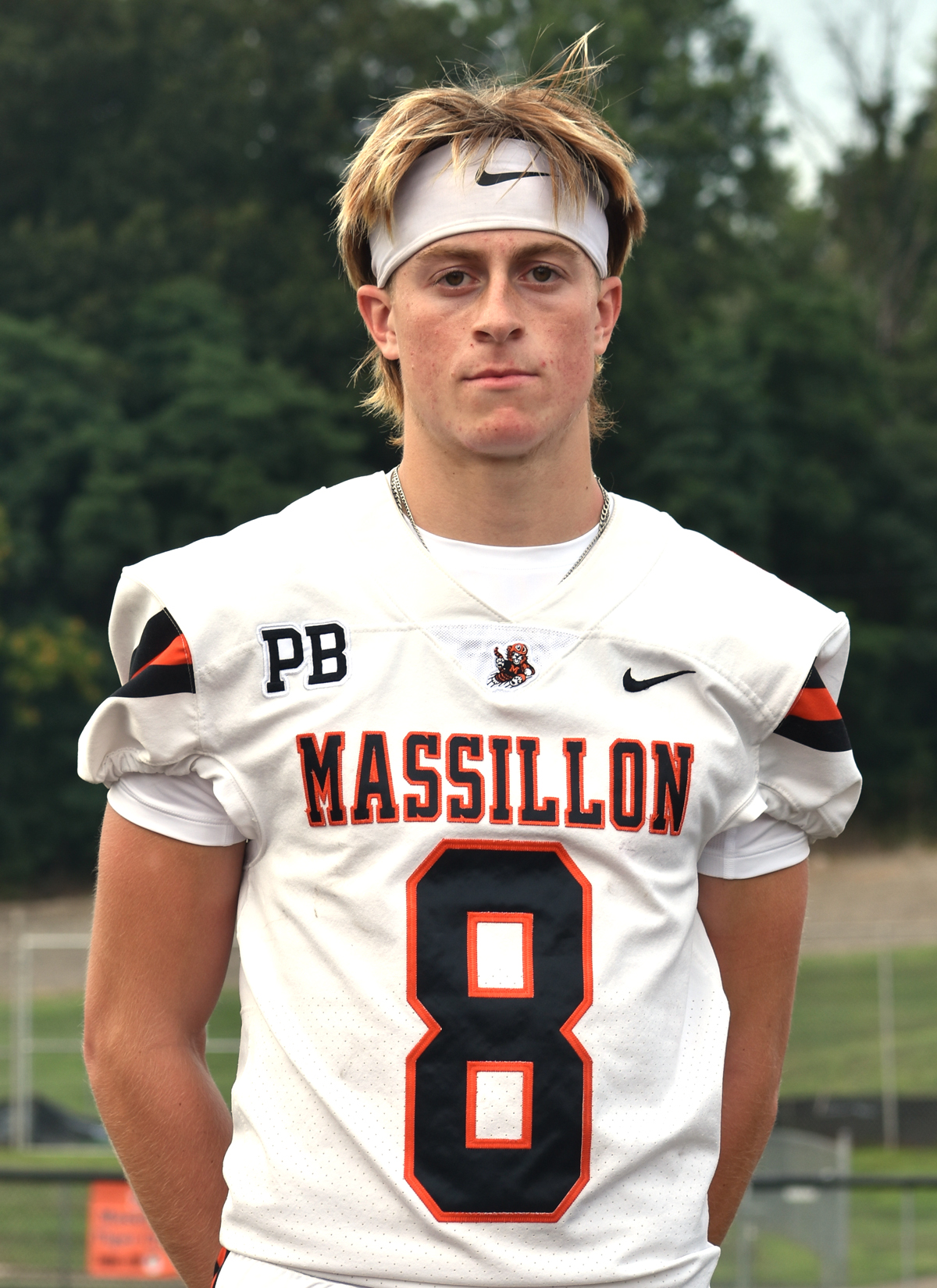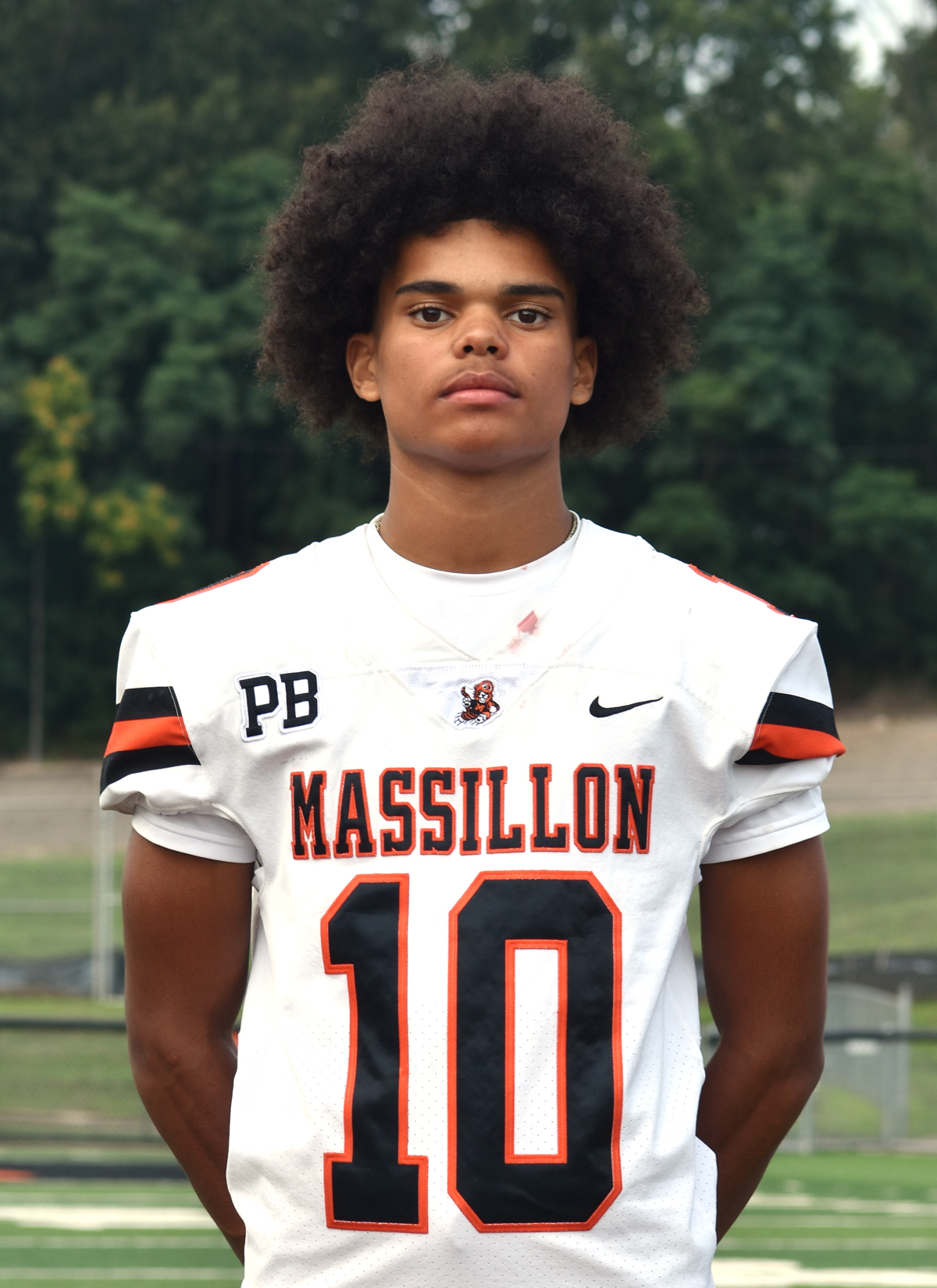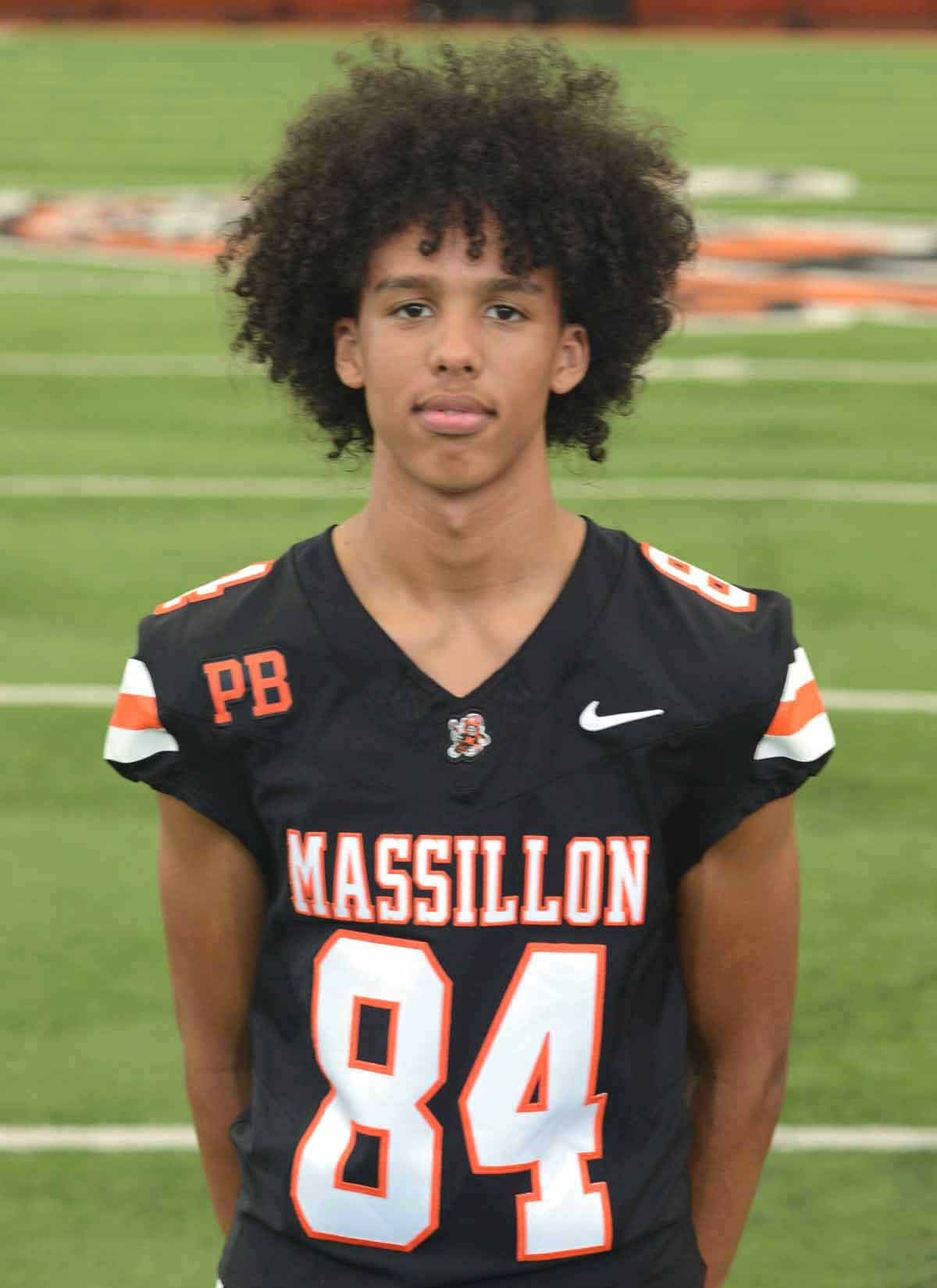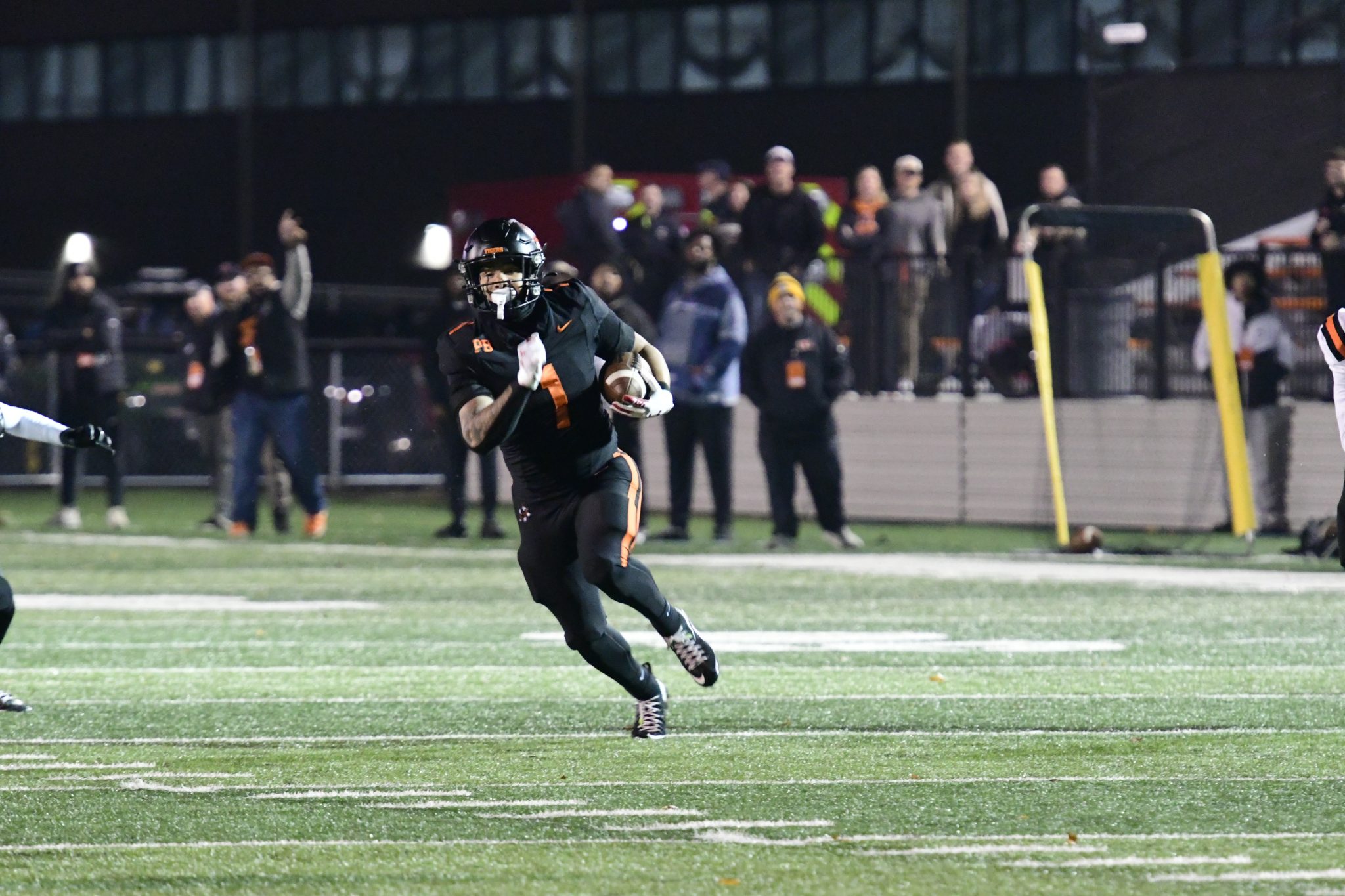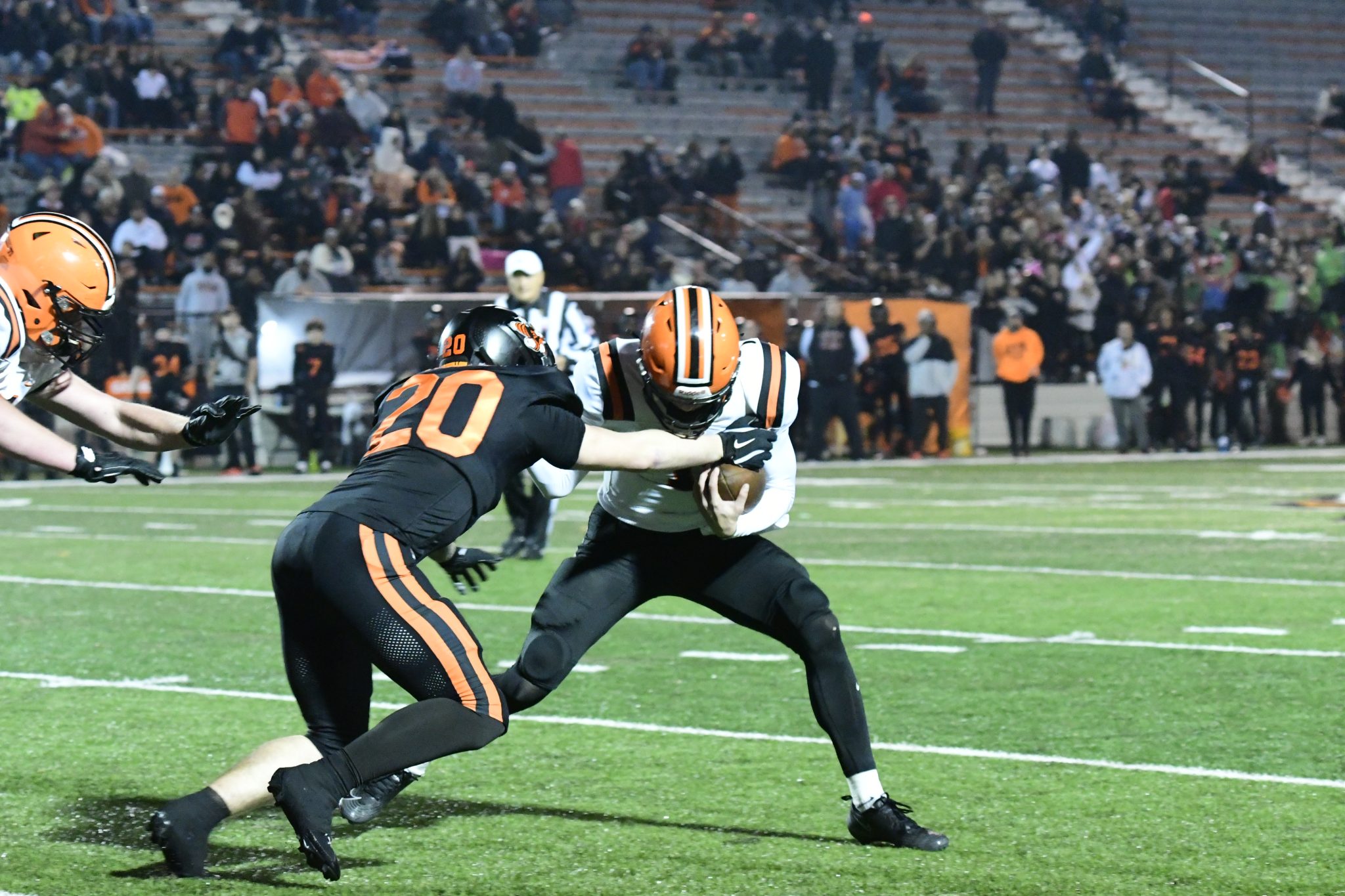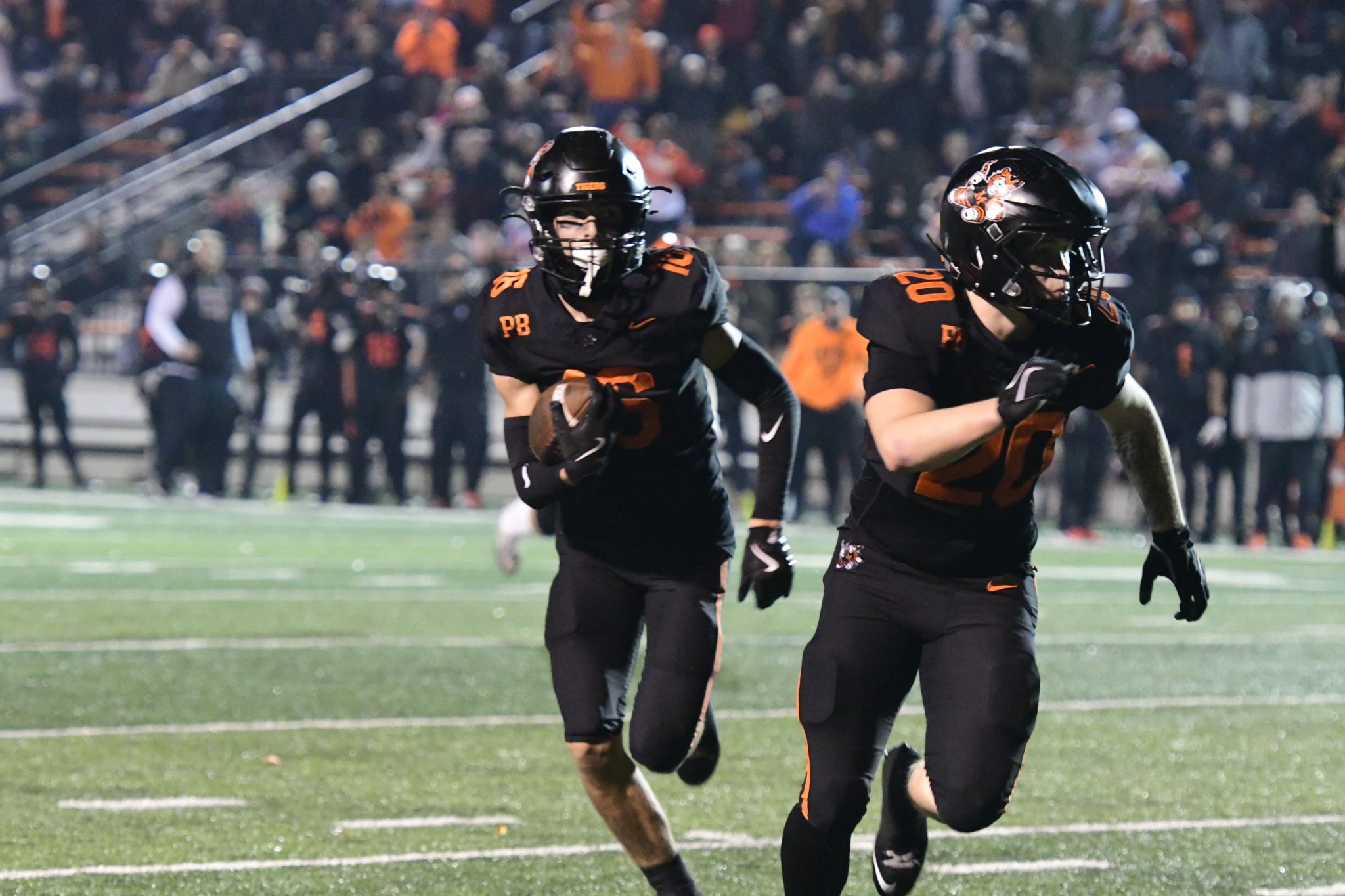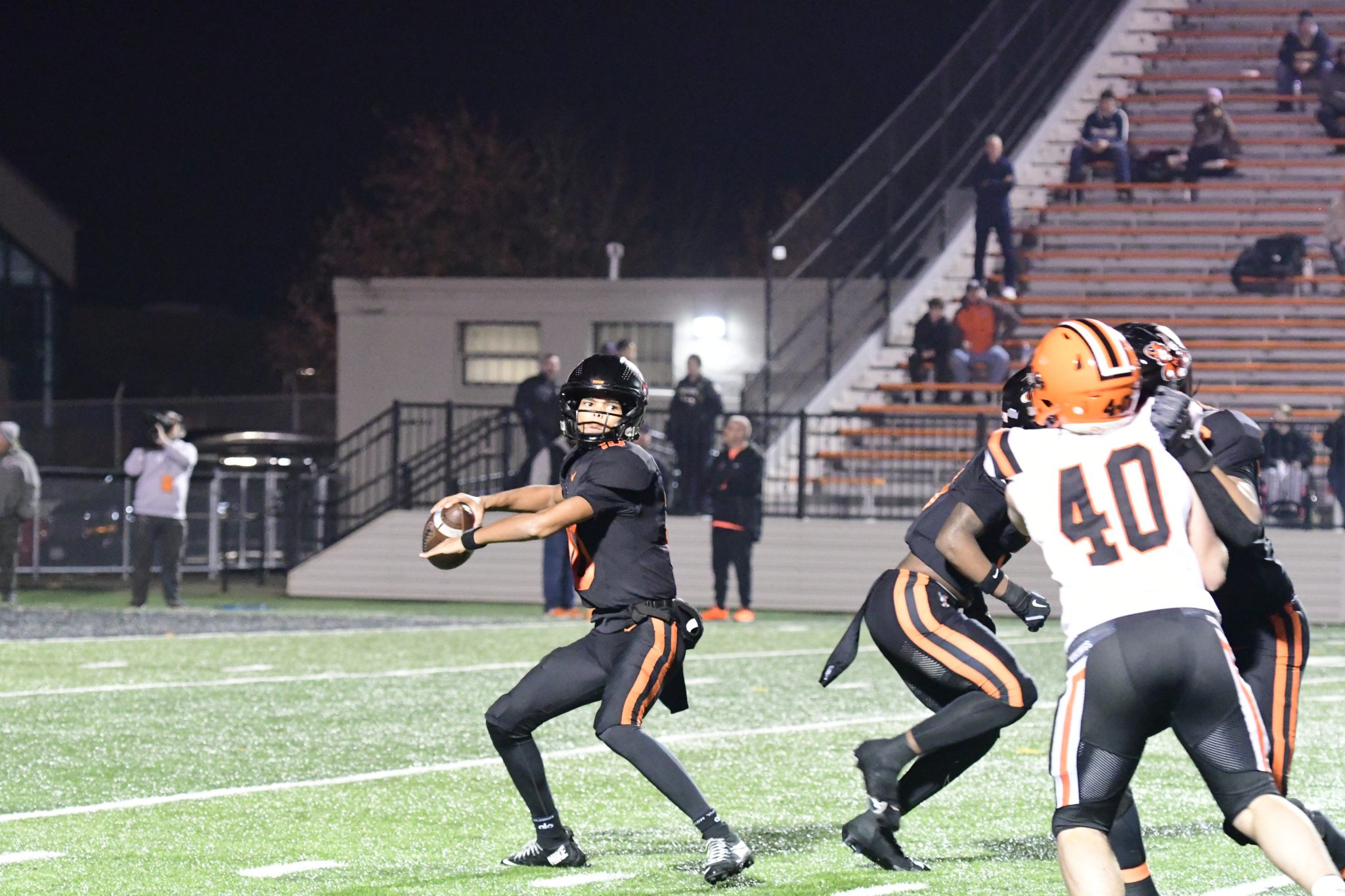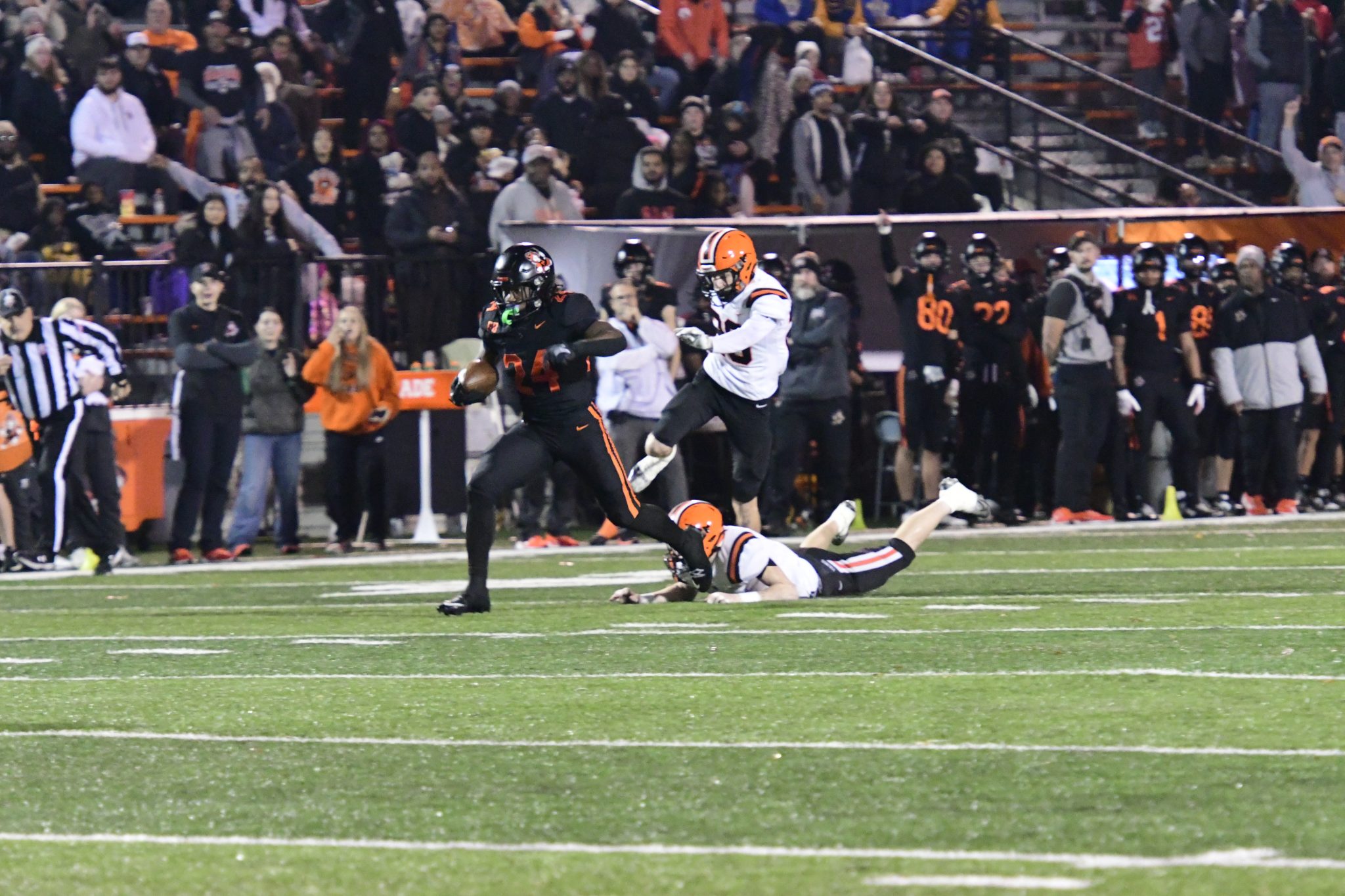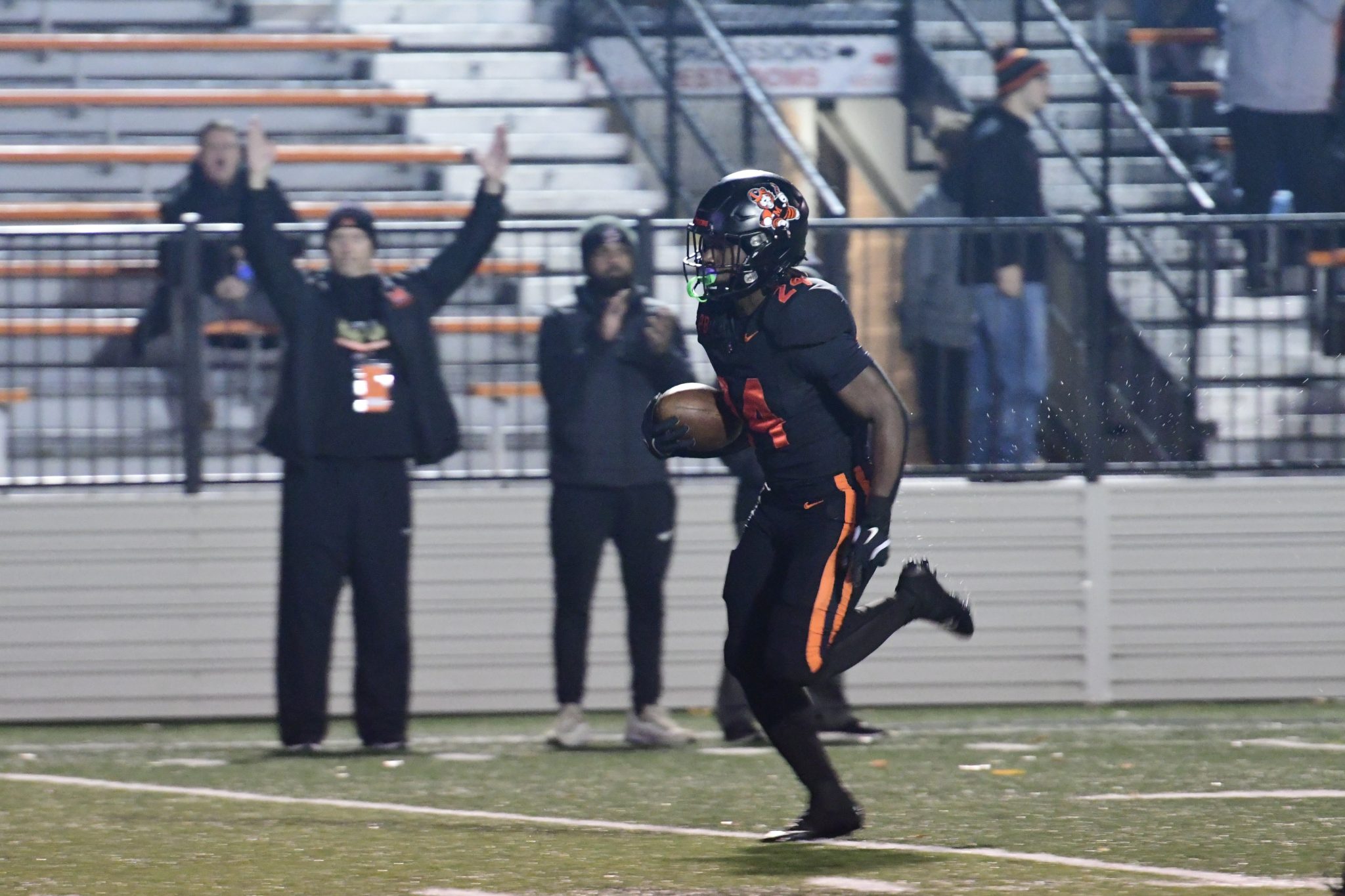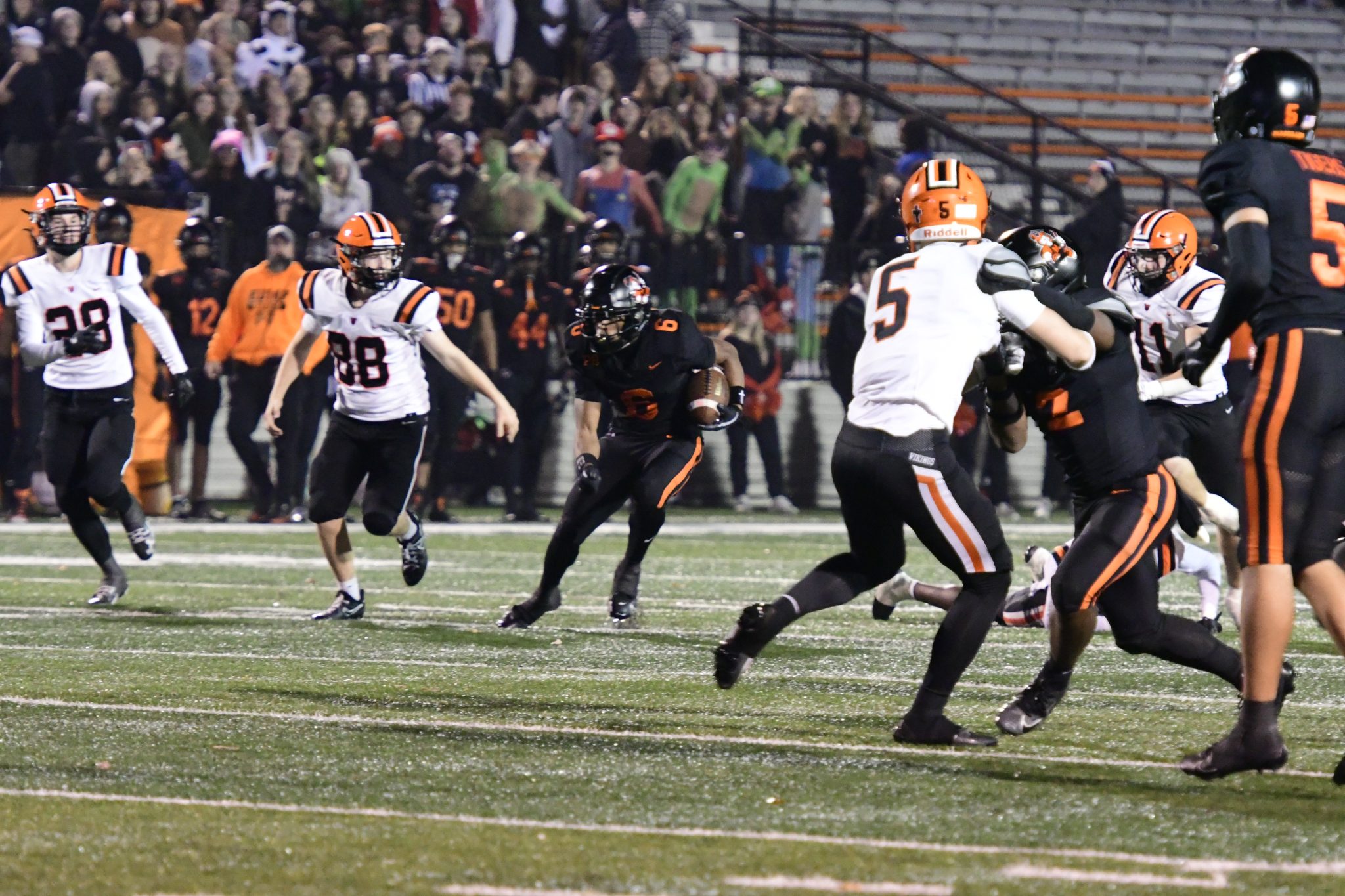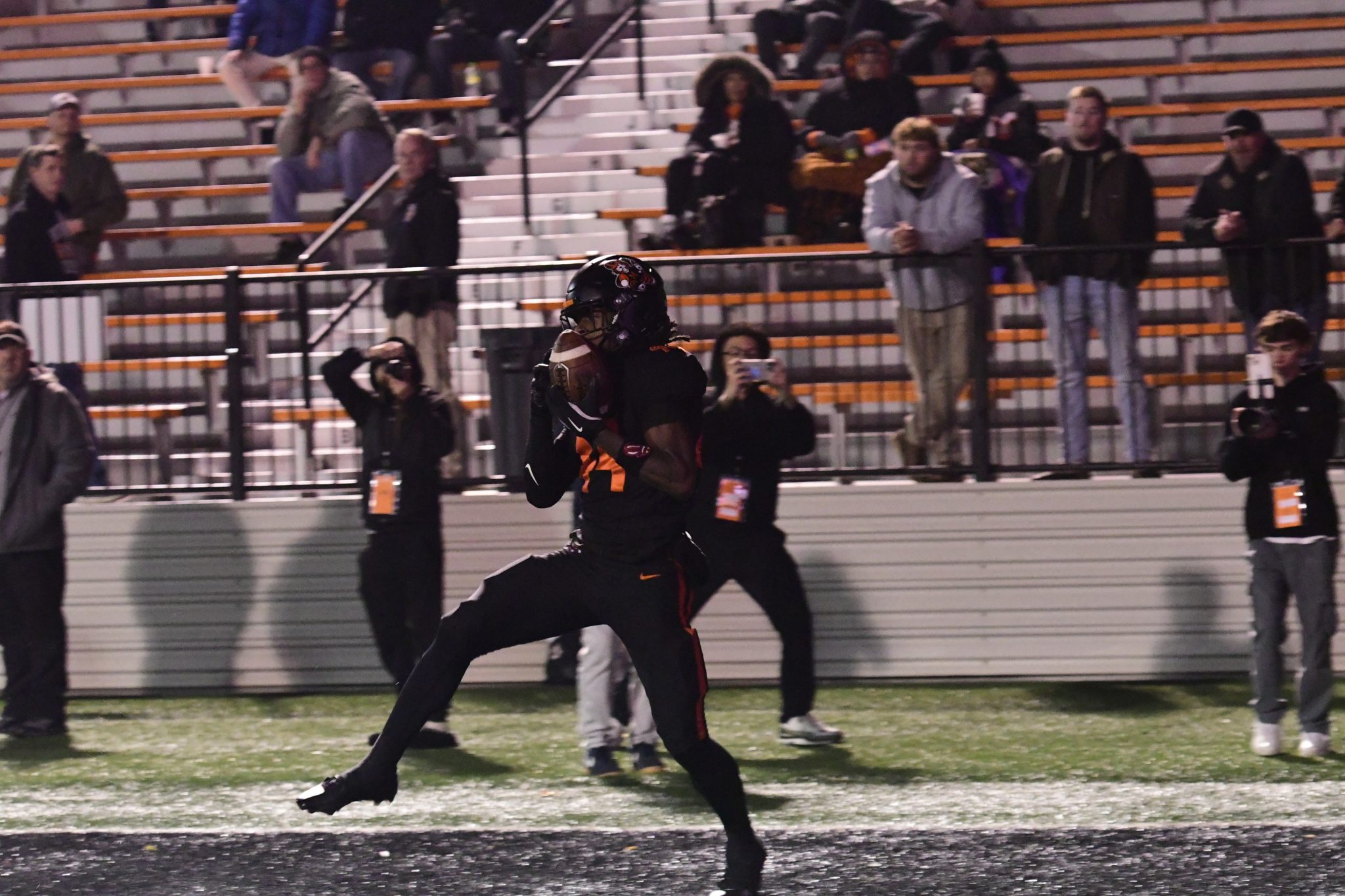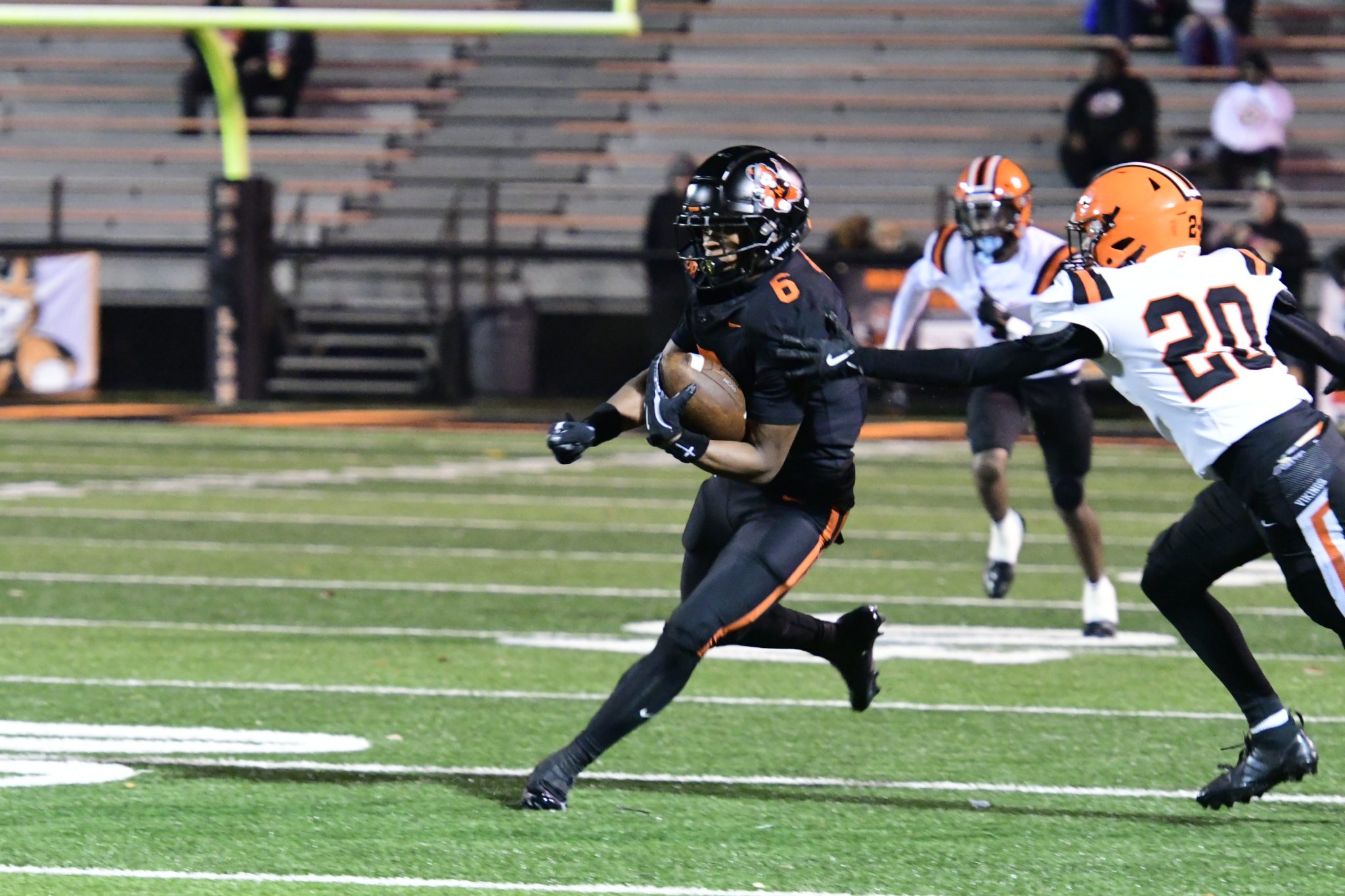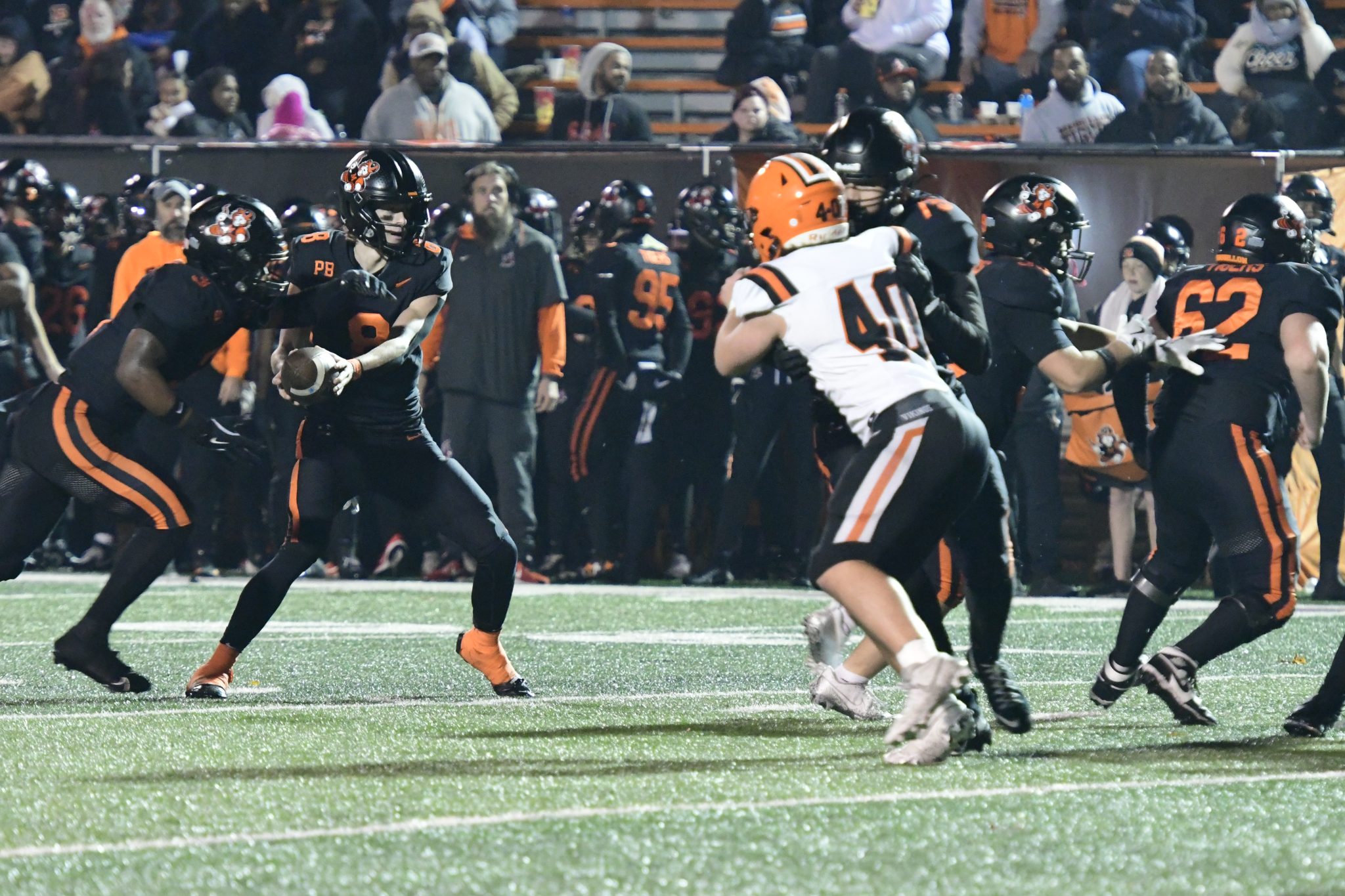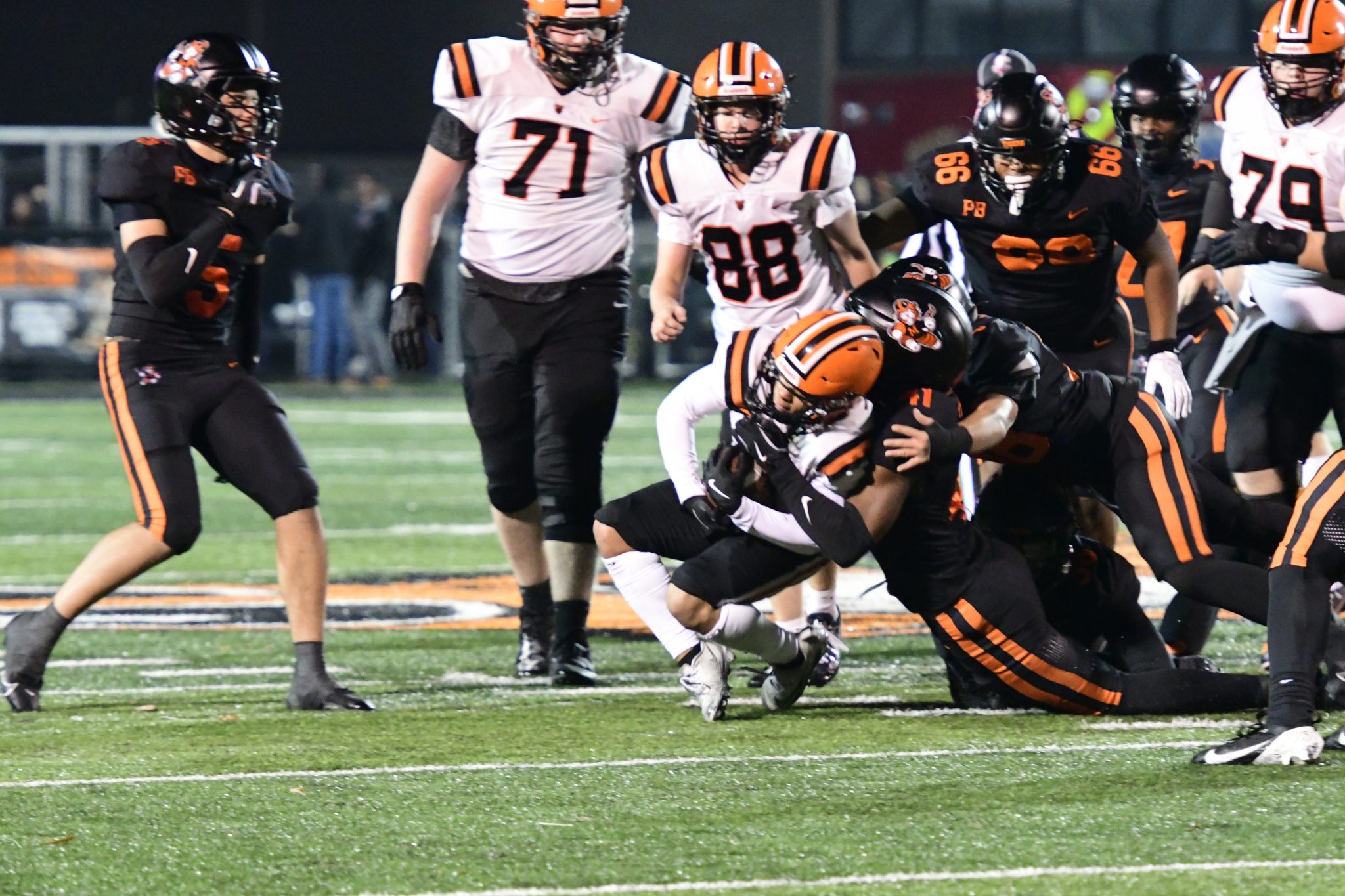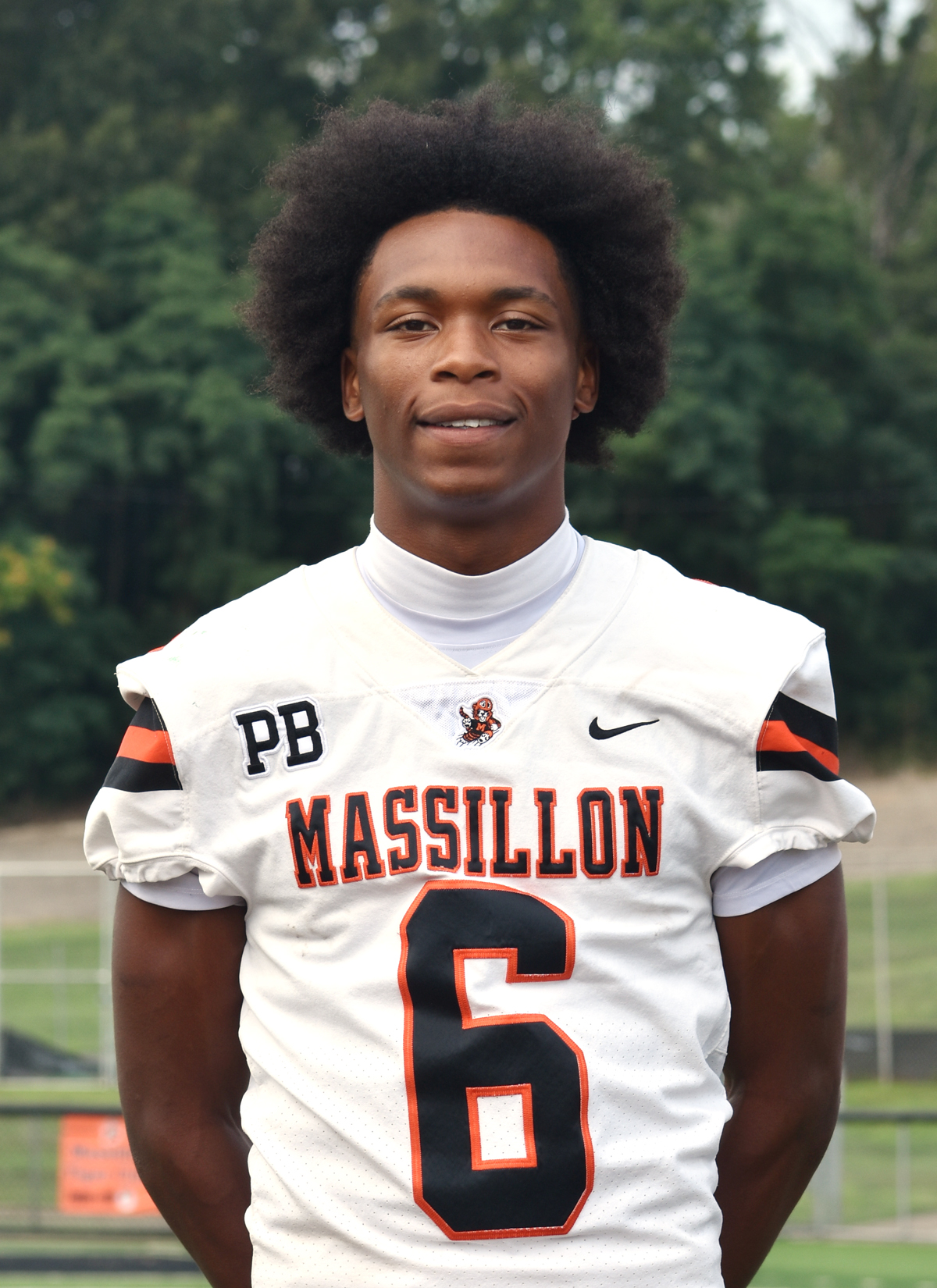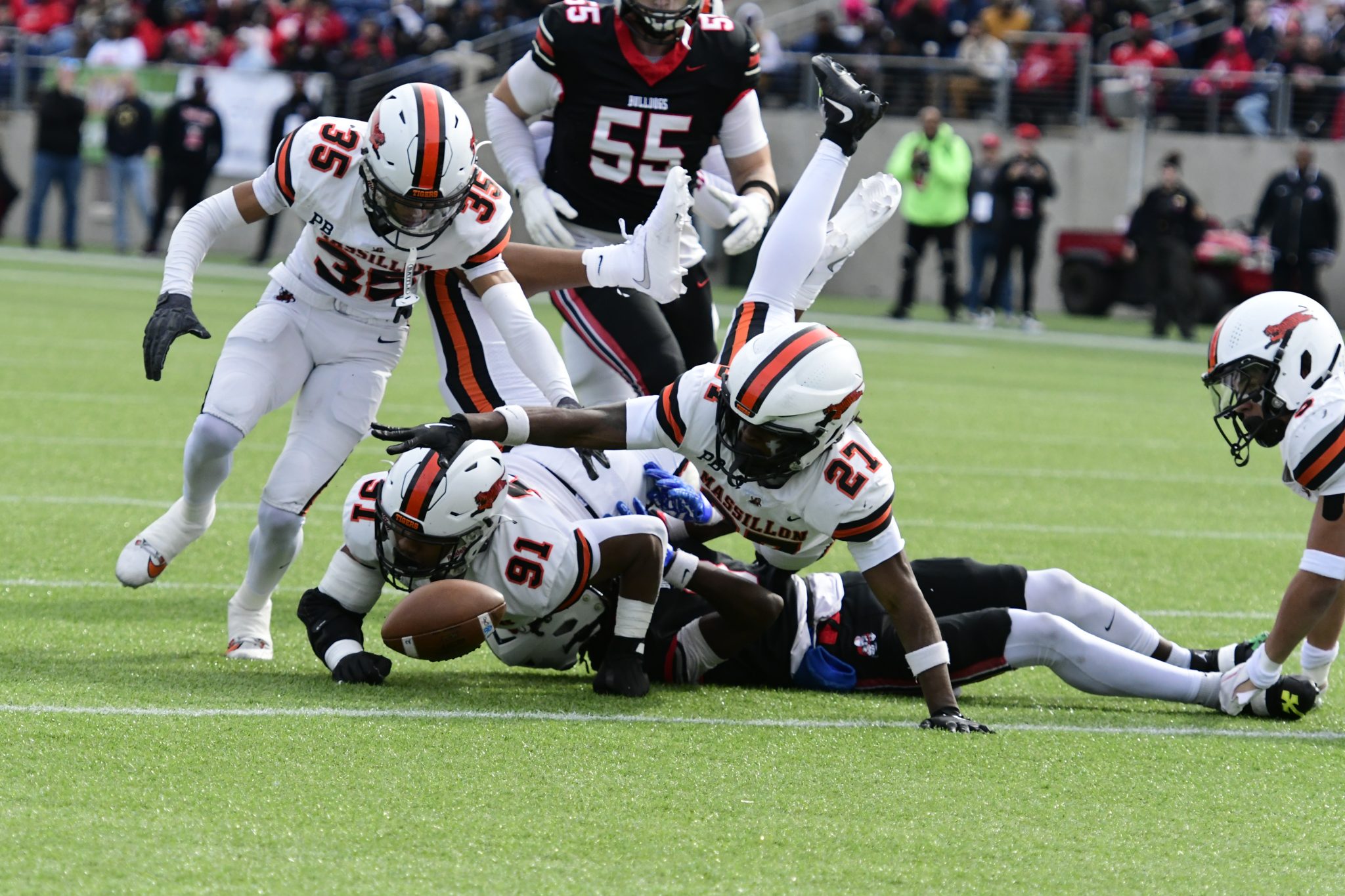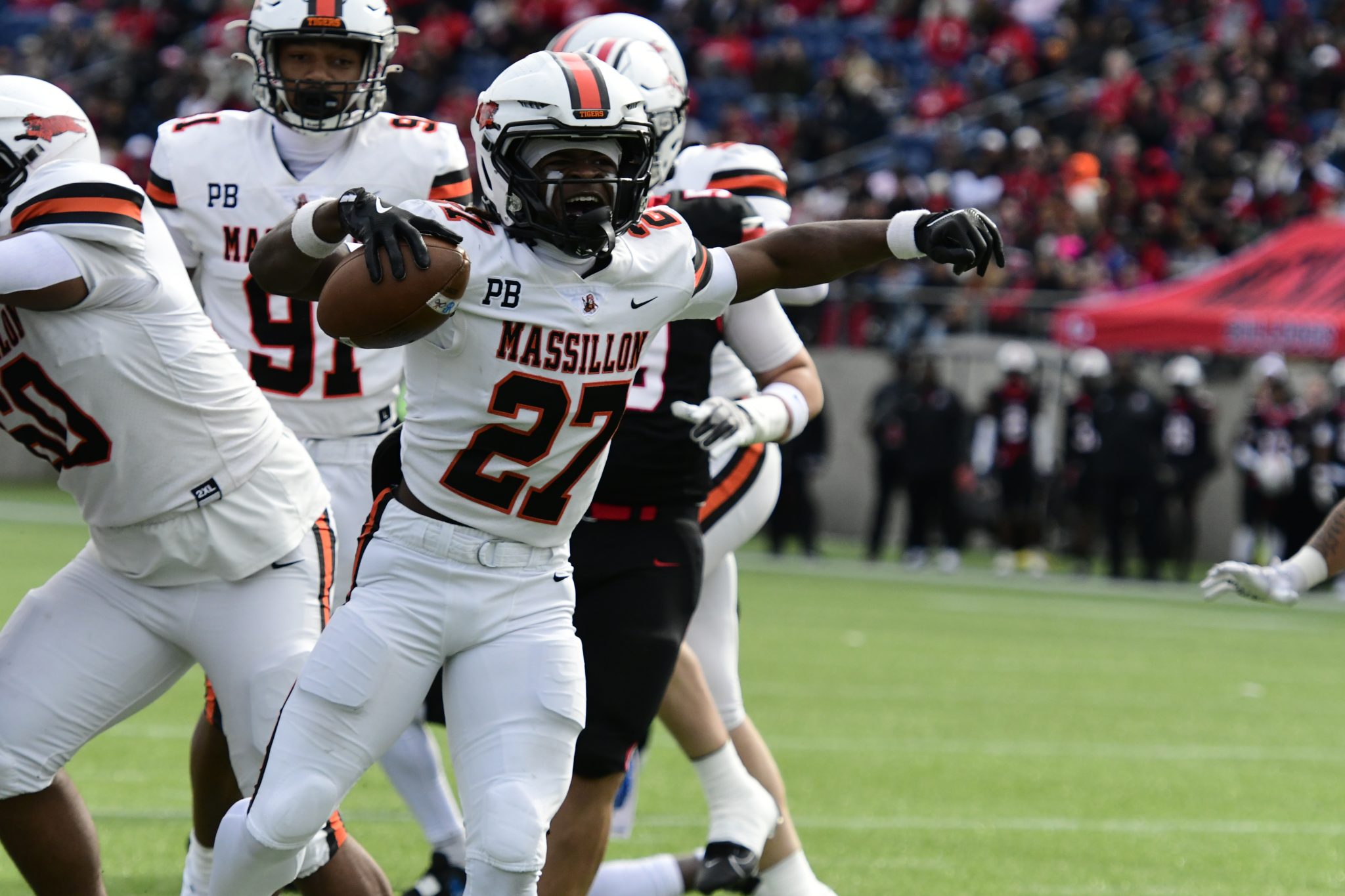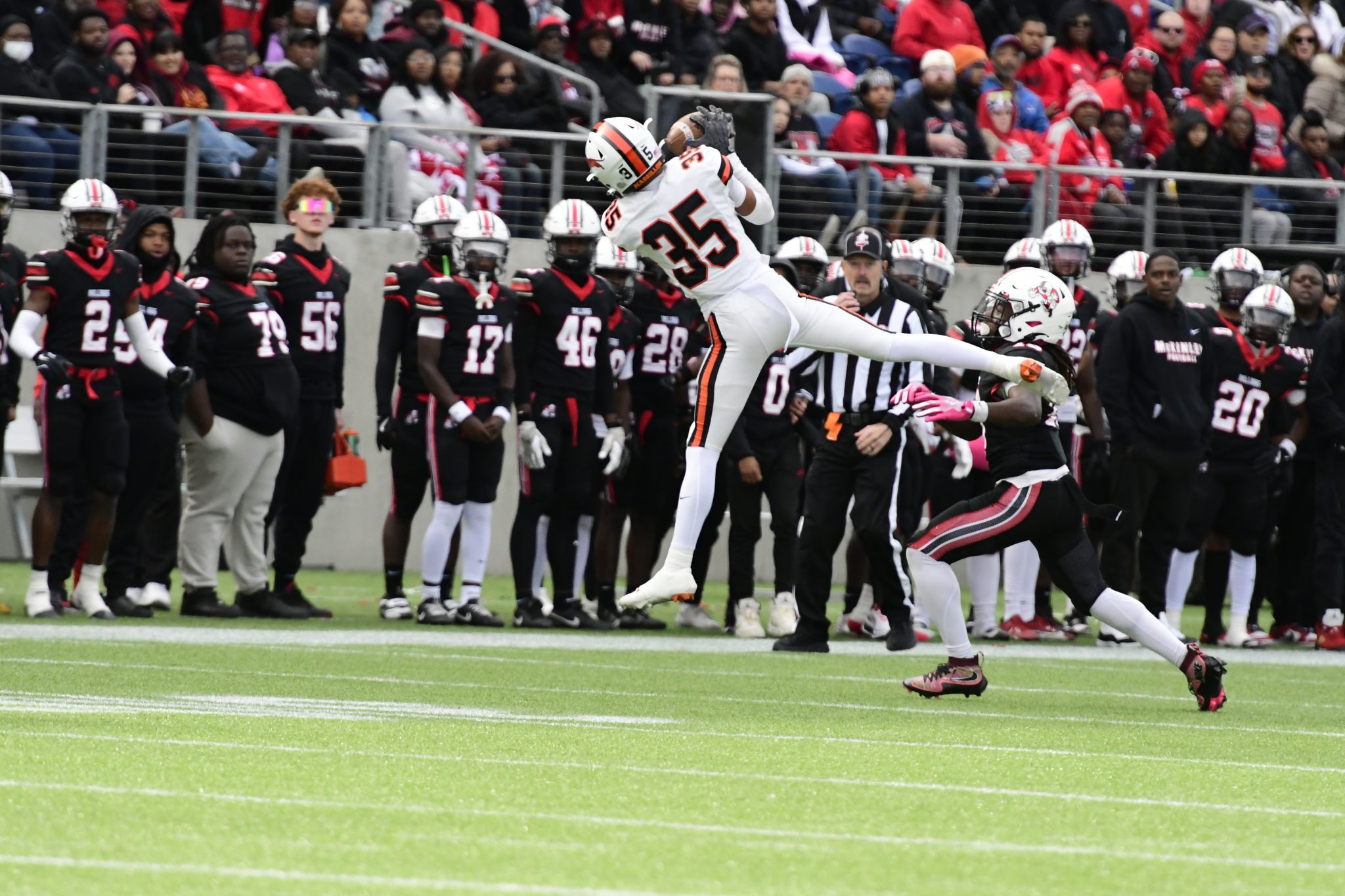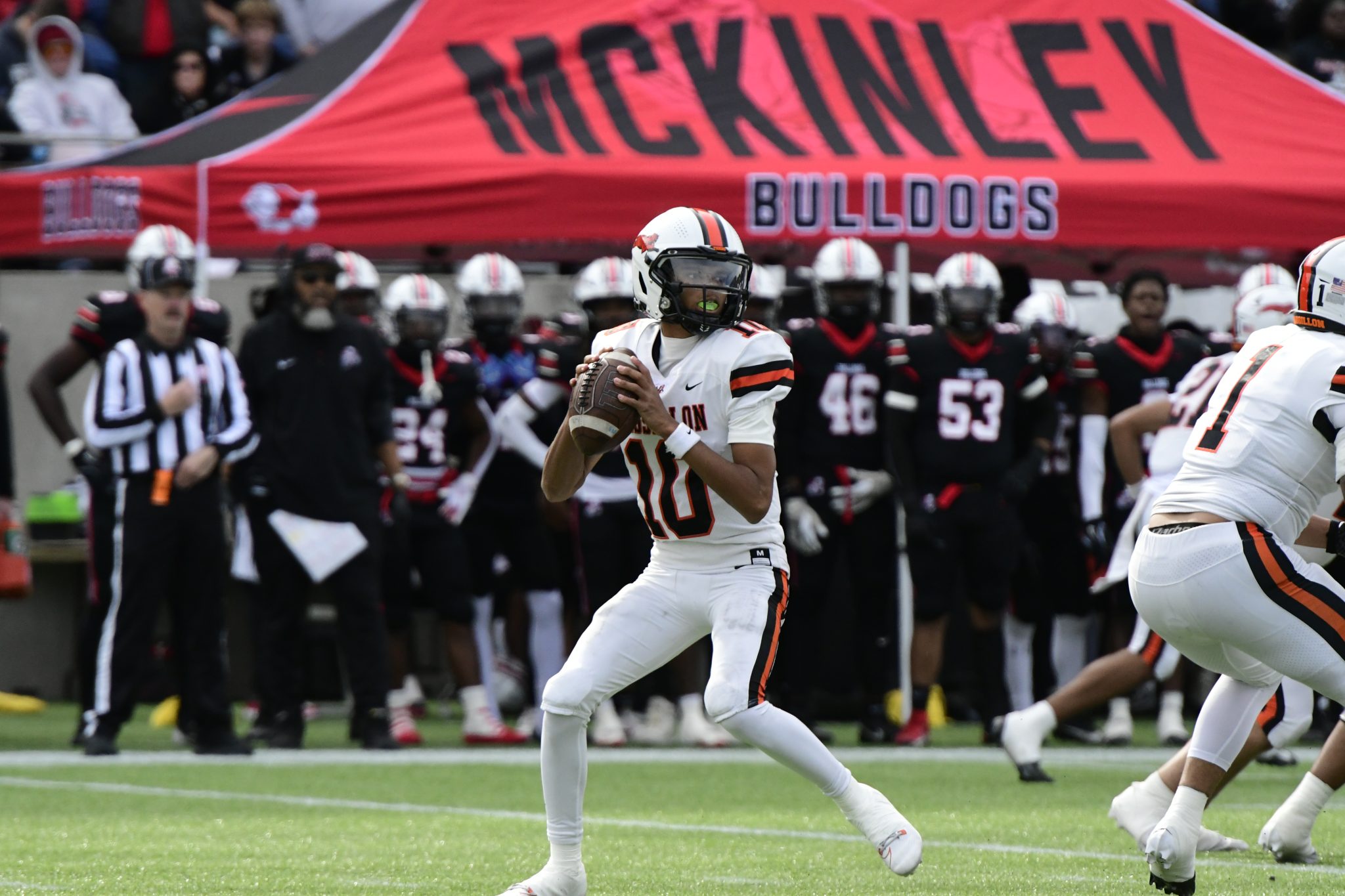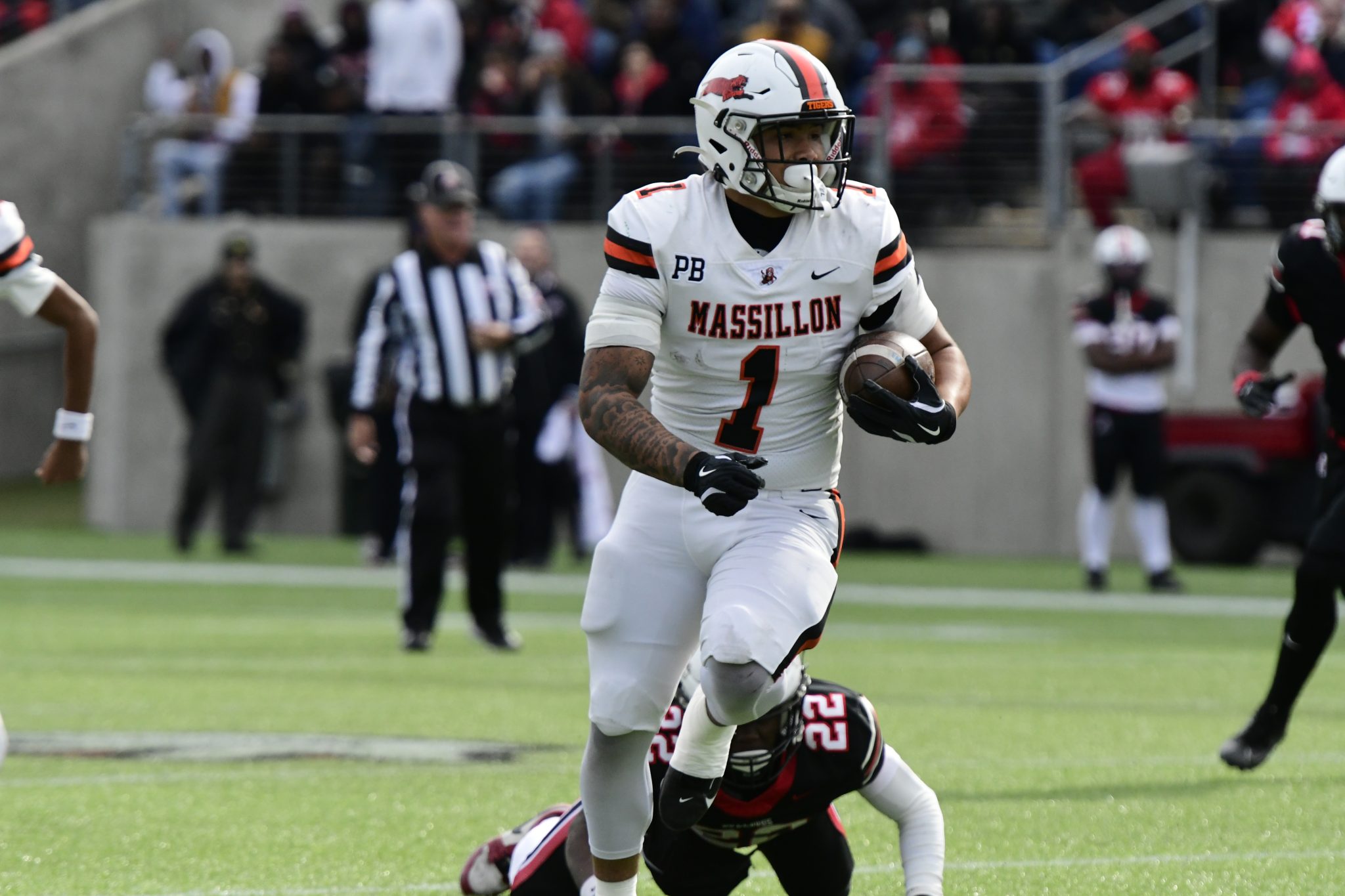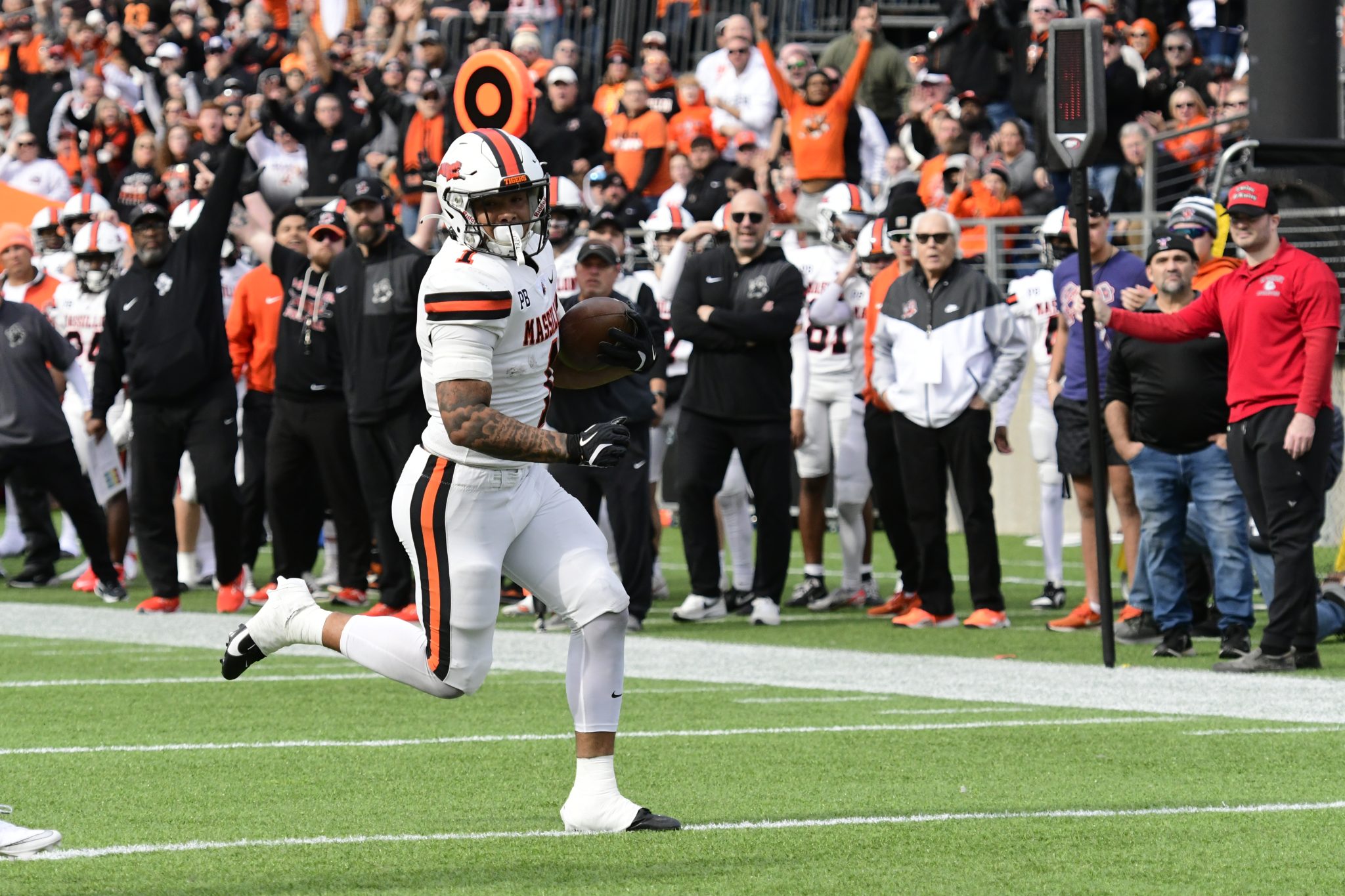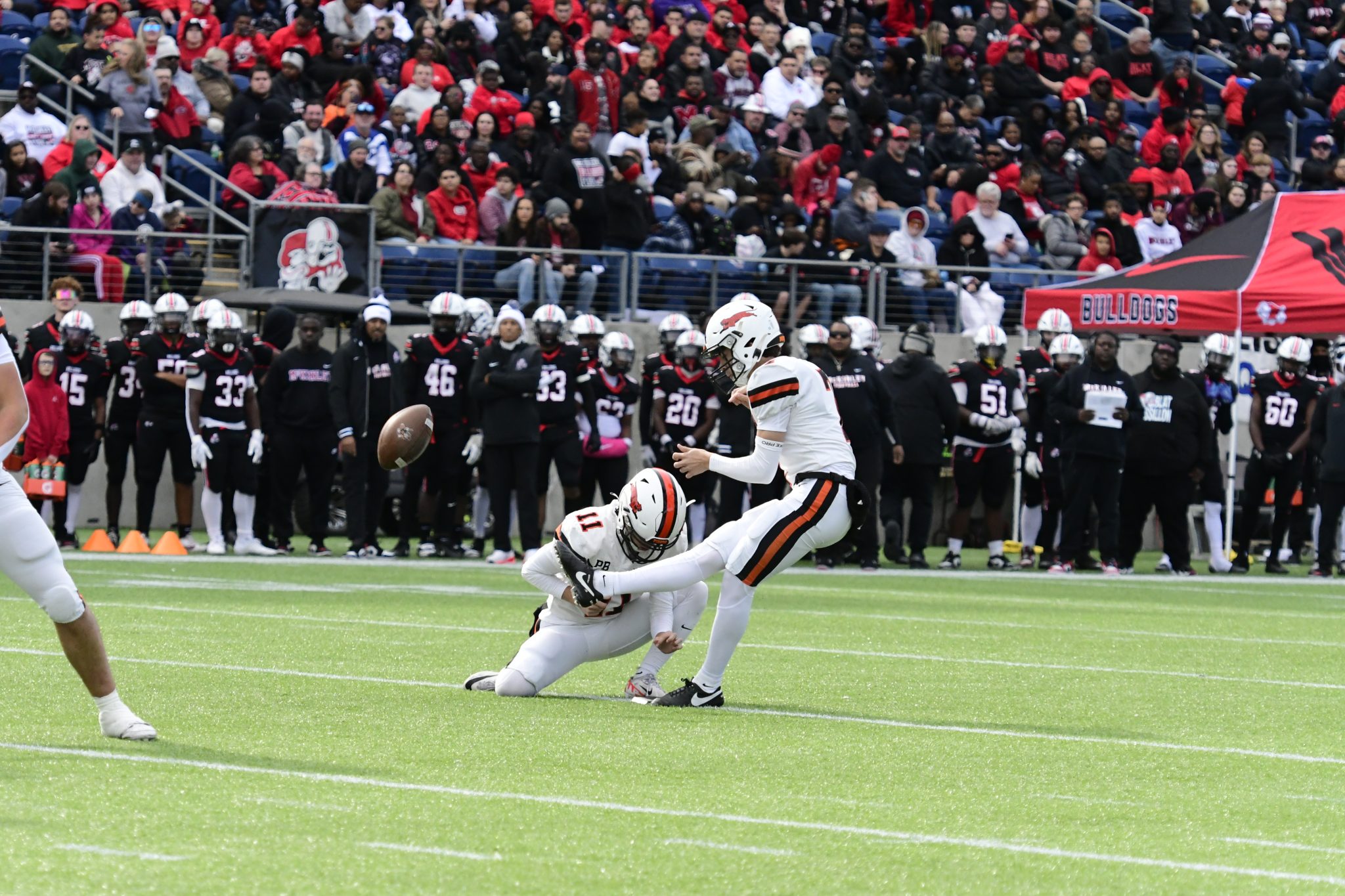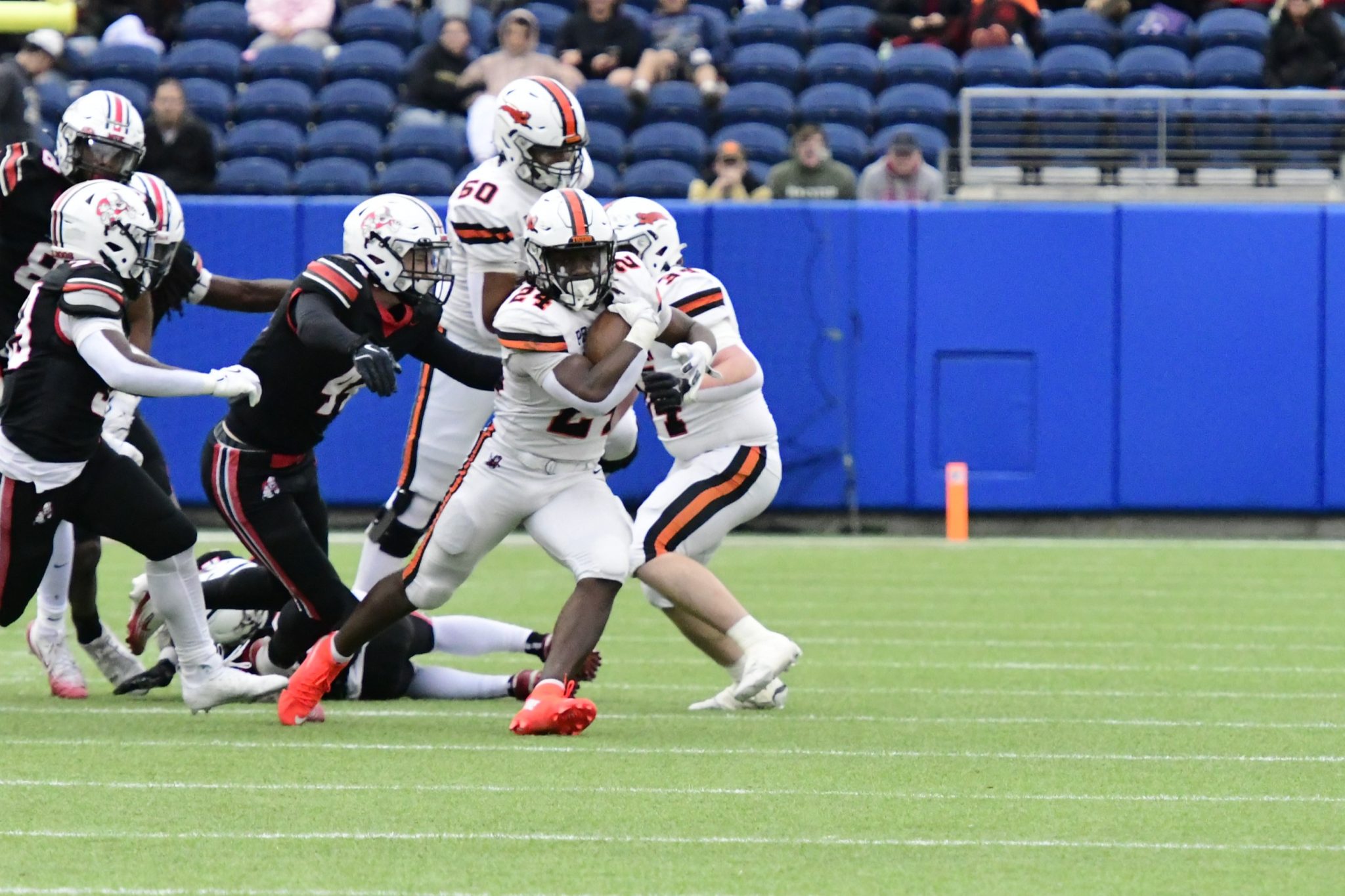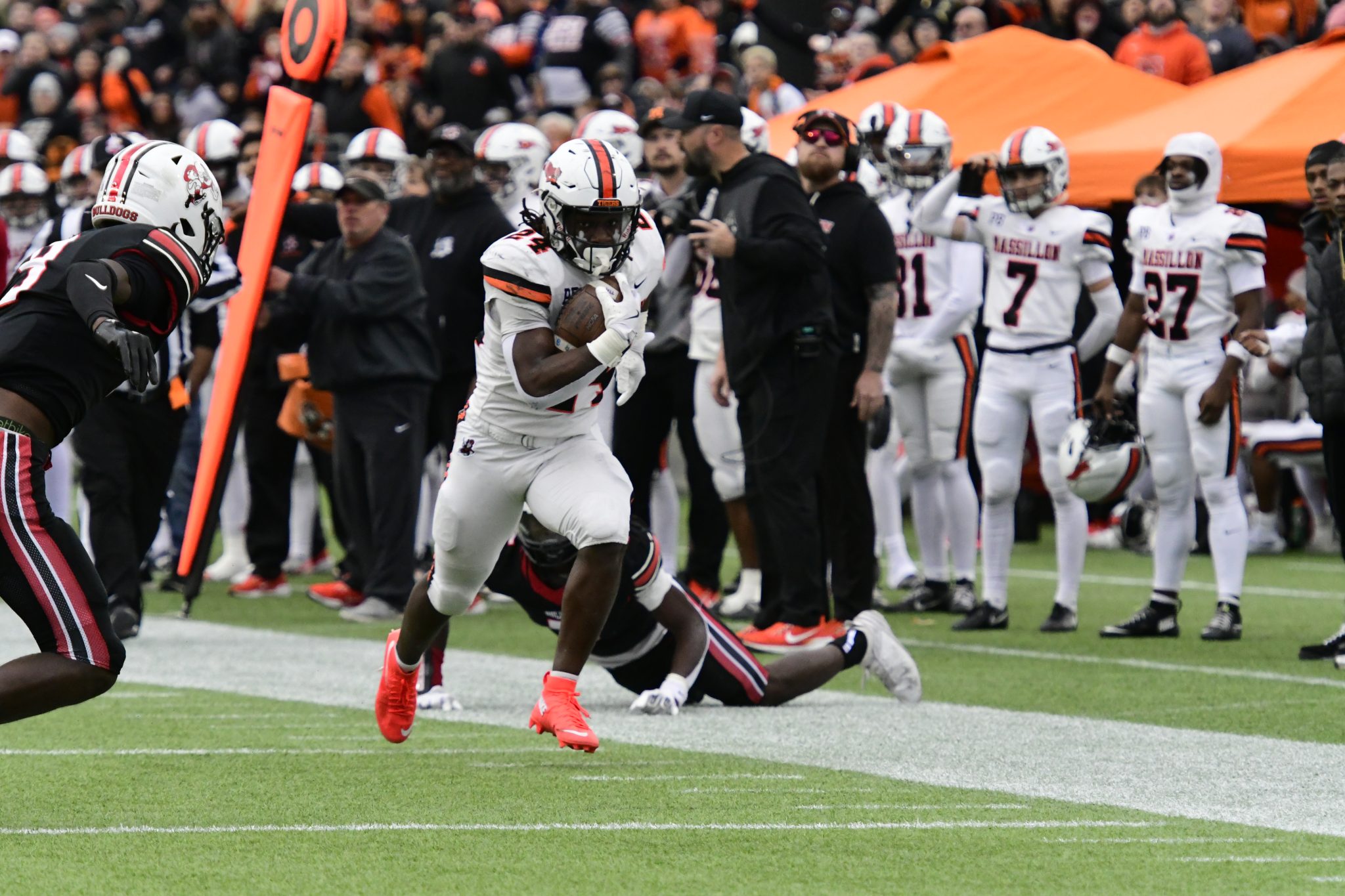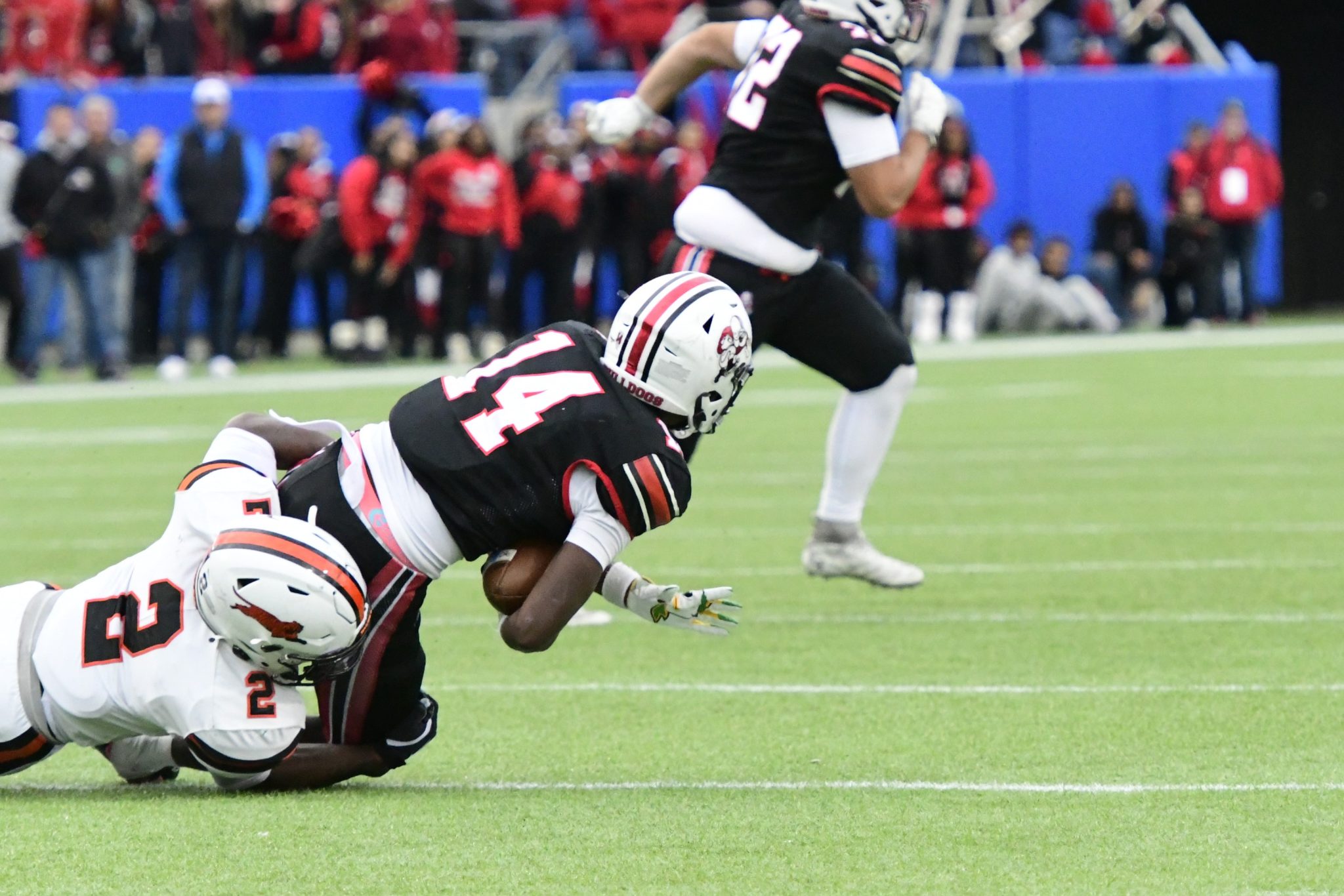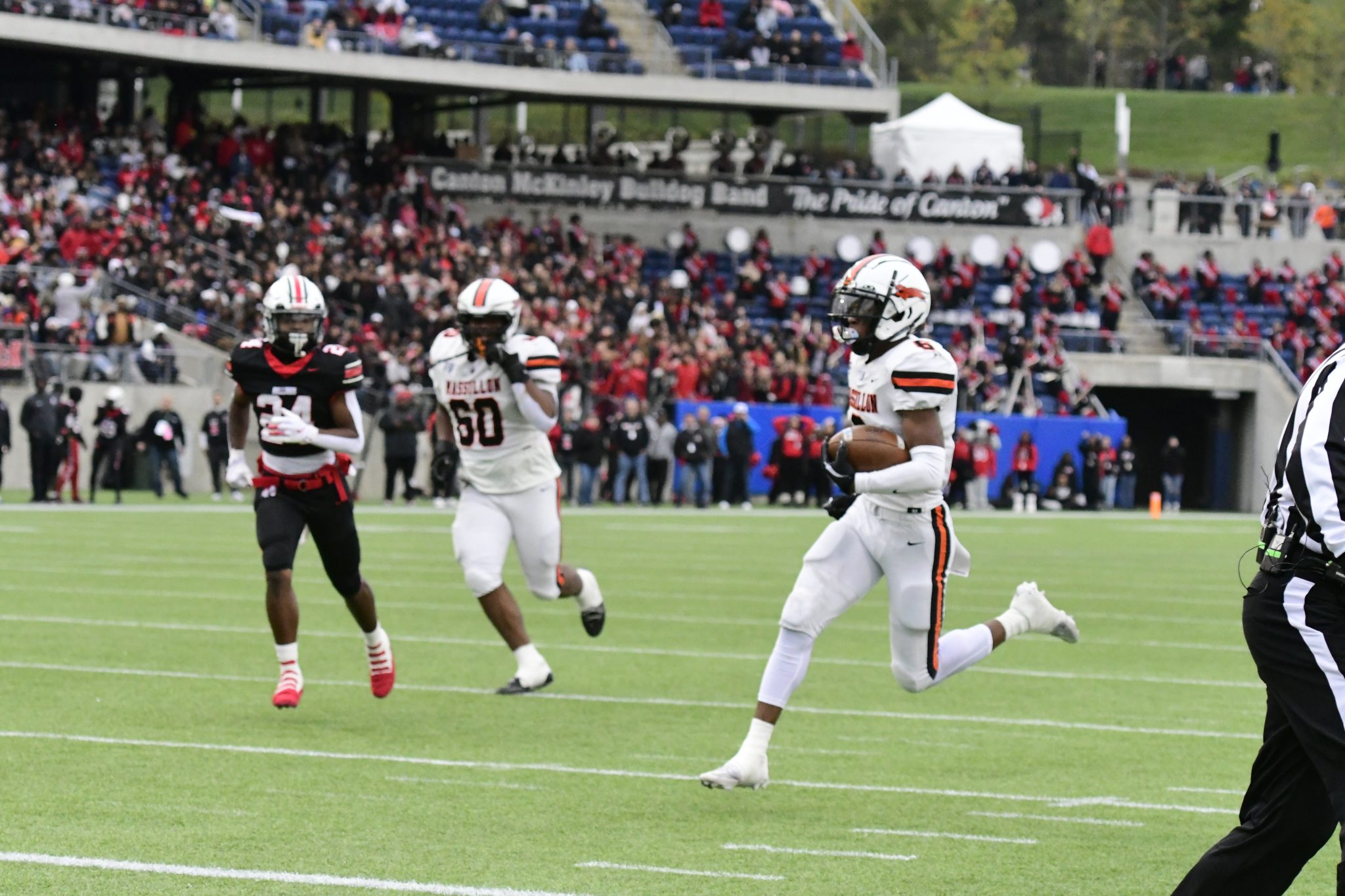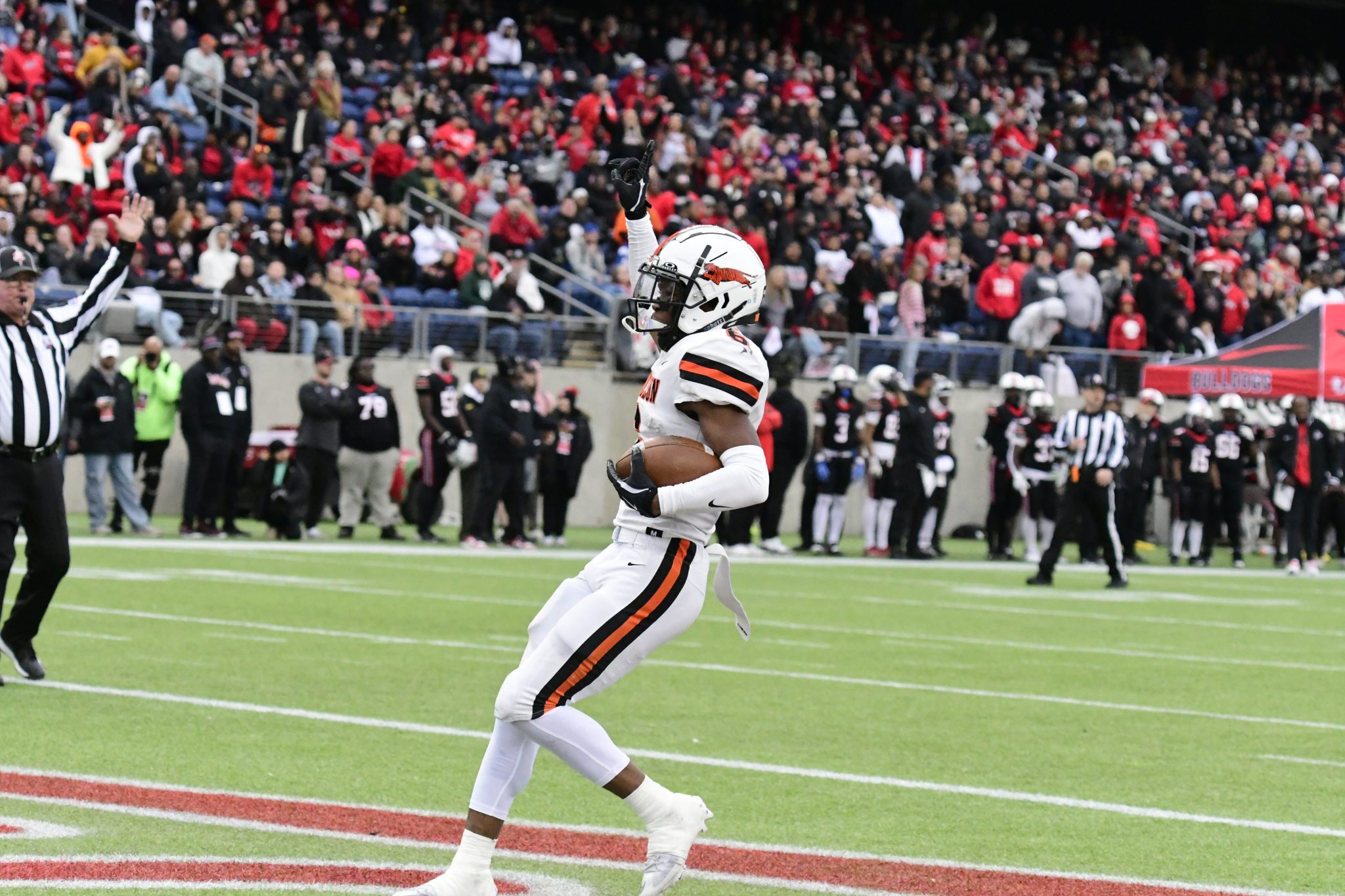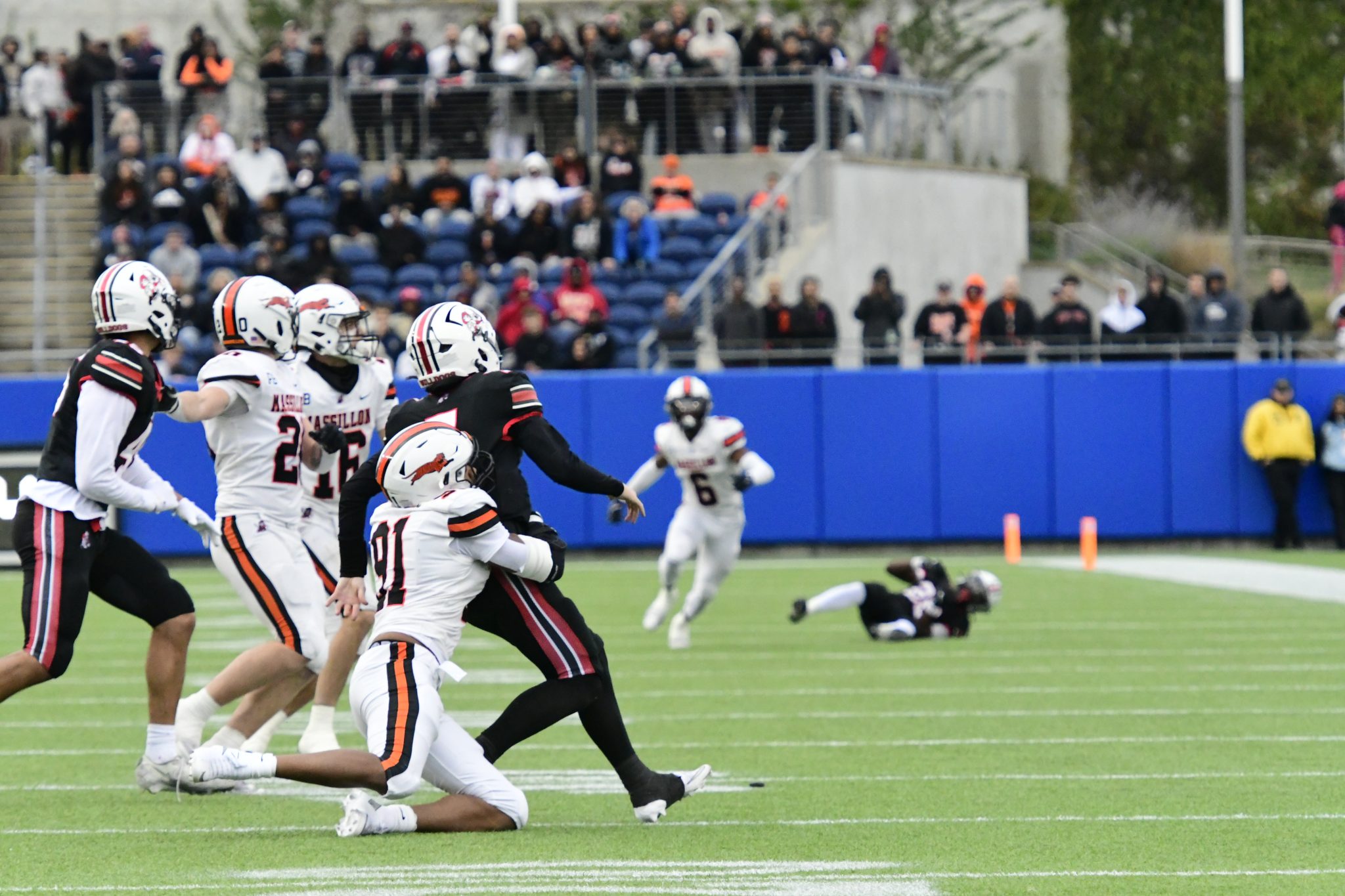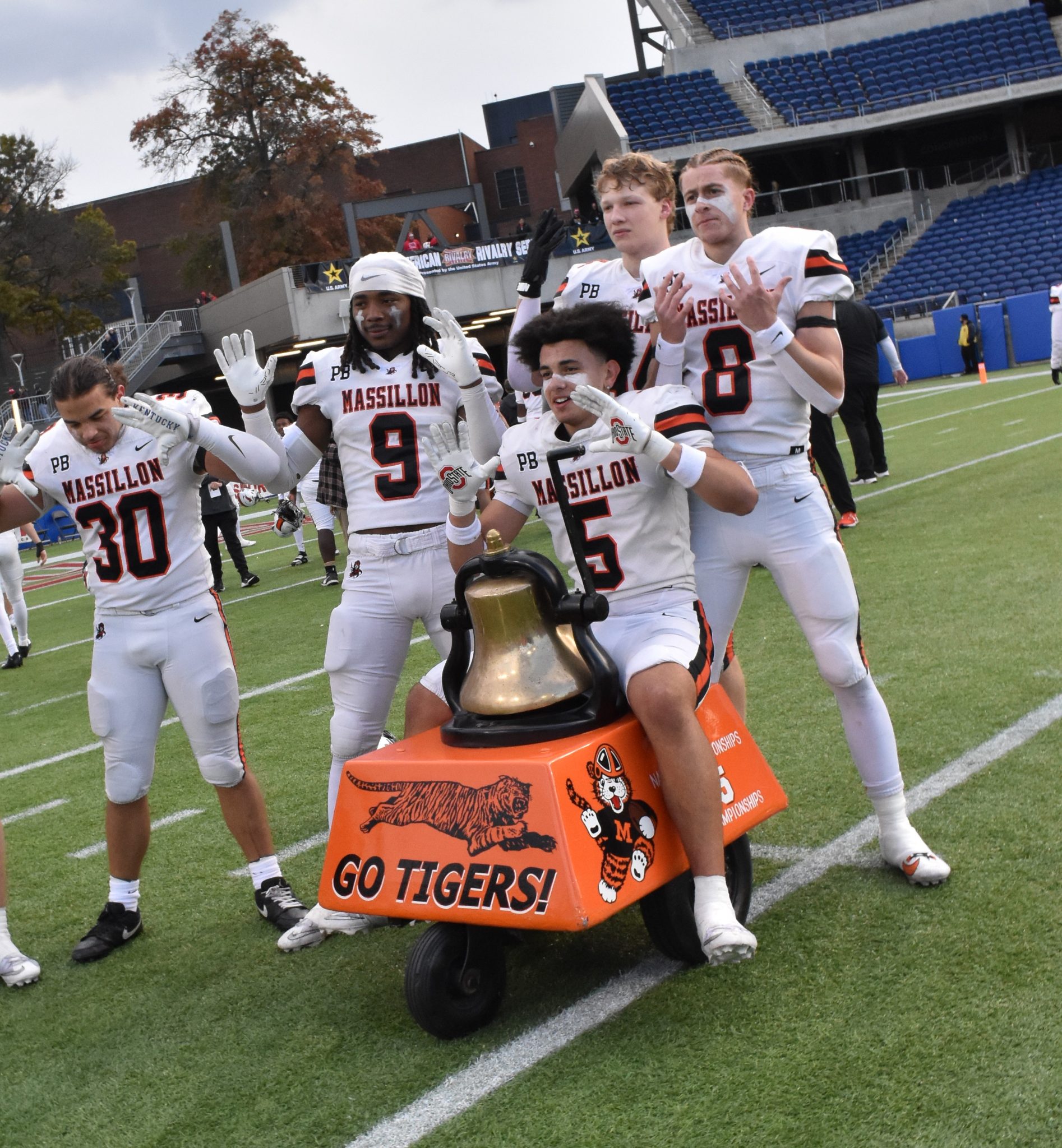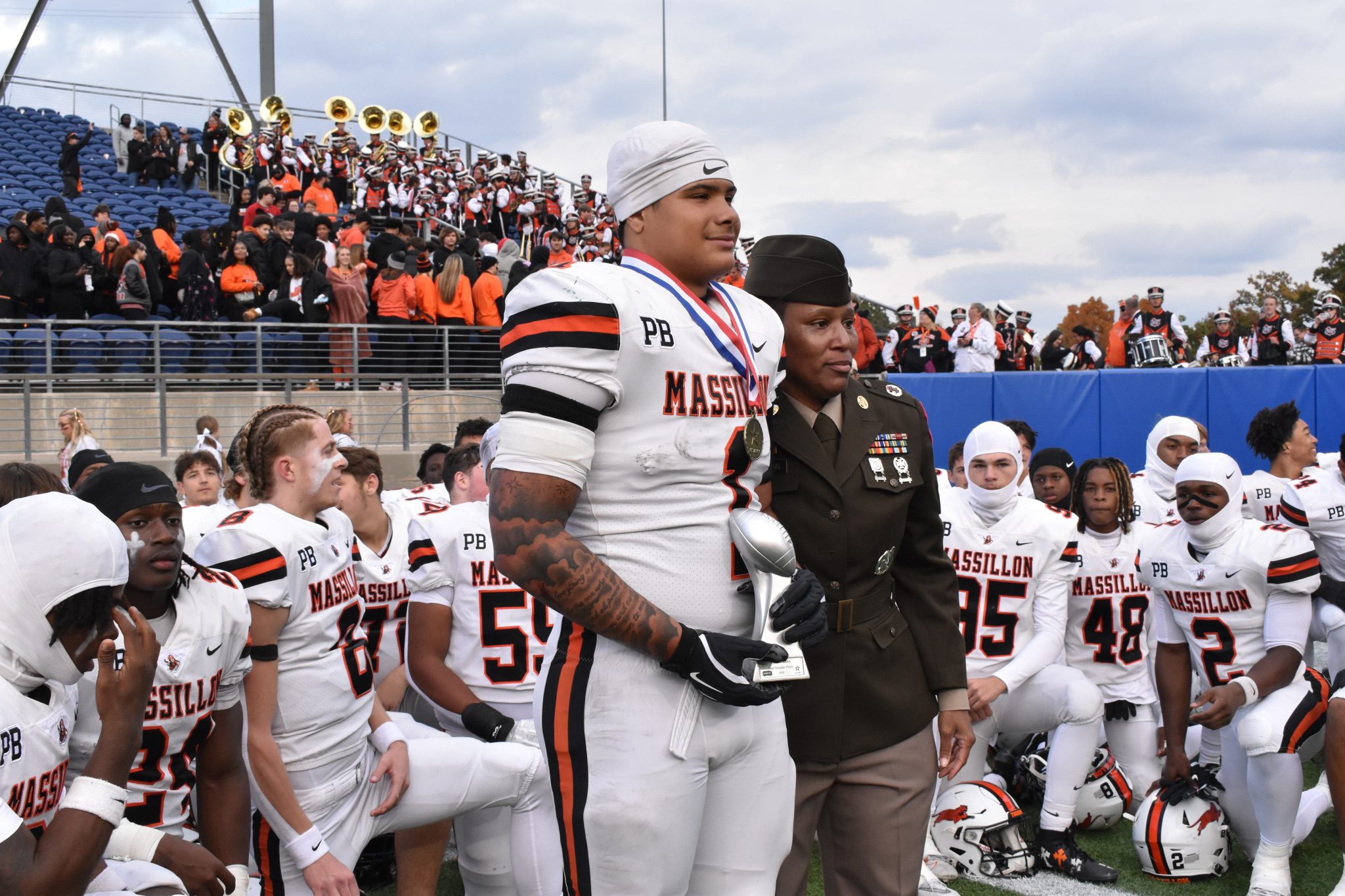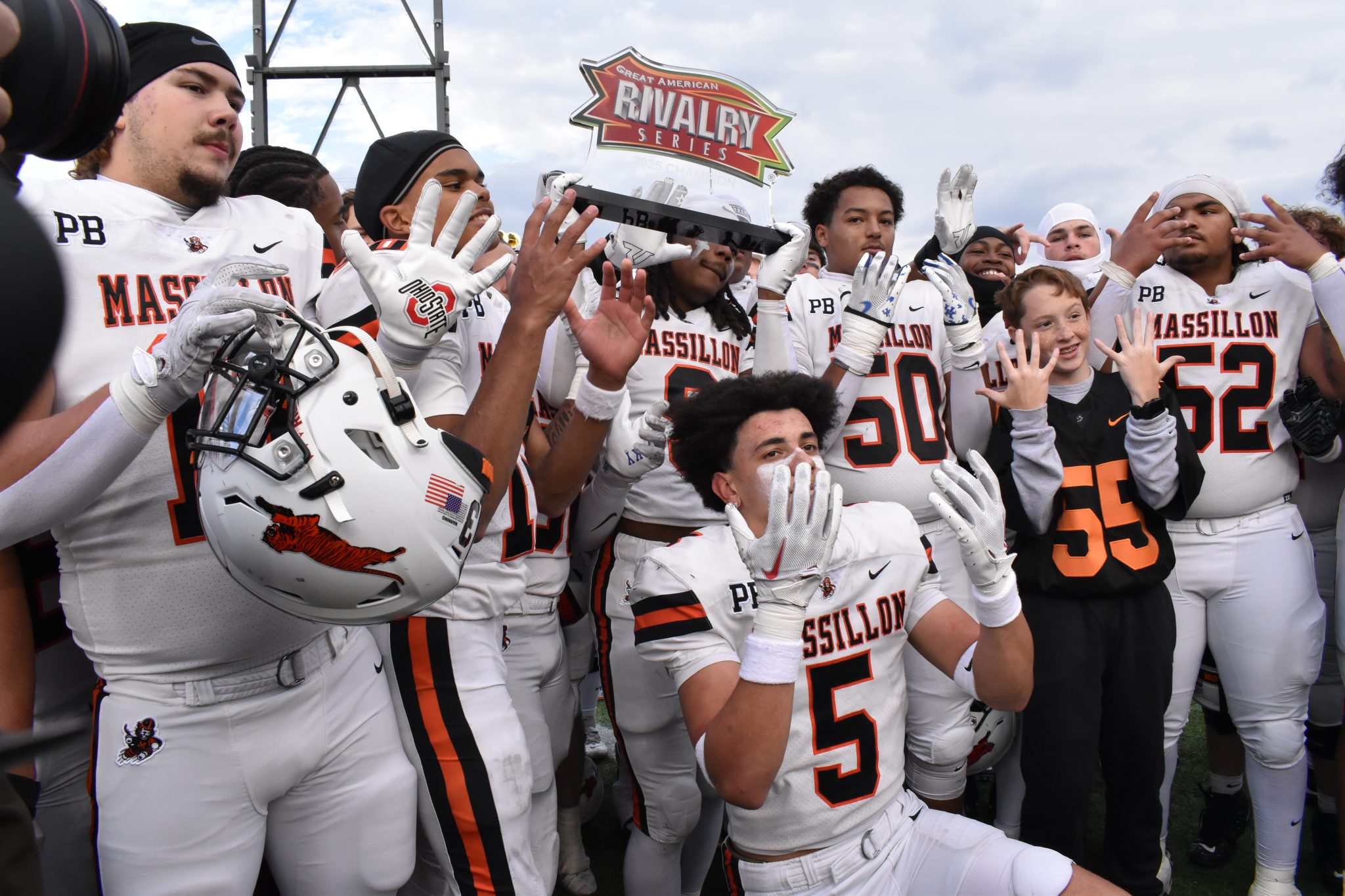 History
History Massillon Steamrolls Columbus DeSales to Advance in the Playoffs
Massillon Steamrolls Columbus DeSales to Advance in the Playoffs
Statistics
Bracket
Massillon used a devastating ground attack against Columbus St. Francis DeSales to overwhelm the host team 48-14 in Round 3 of the state playoffs. With the win, the Tigers advance to the regional championship game for a much-anticipated match-up with Big Walnut, which defeated Canal Winchester to move on. Last season, the two teams met in the same venue, with Big Walnut coming away with a 14-7 victory.
Coaches will tell you that when on offense you take what the defense gives. And that works well for the Tigers, as they are very adept with both the run and the pass. When prepping for Hoover, the coaches observed that the Viking secondary presented a sizeable mismatch in Massillon’s favor. So, the game plan was to throw the ball, which resulted in quarterback Manny Patterson having one of his best outings of the season. By game’s end he had completed 12 of 13 passes for 226 yards and four touchdowns, with a whopping 340 efficiency rating.
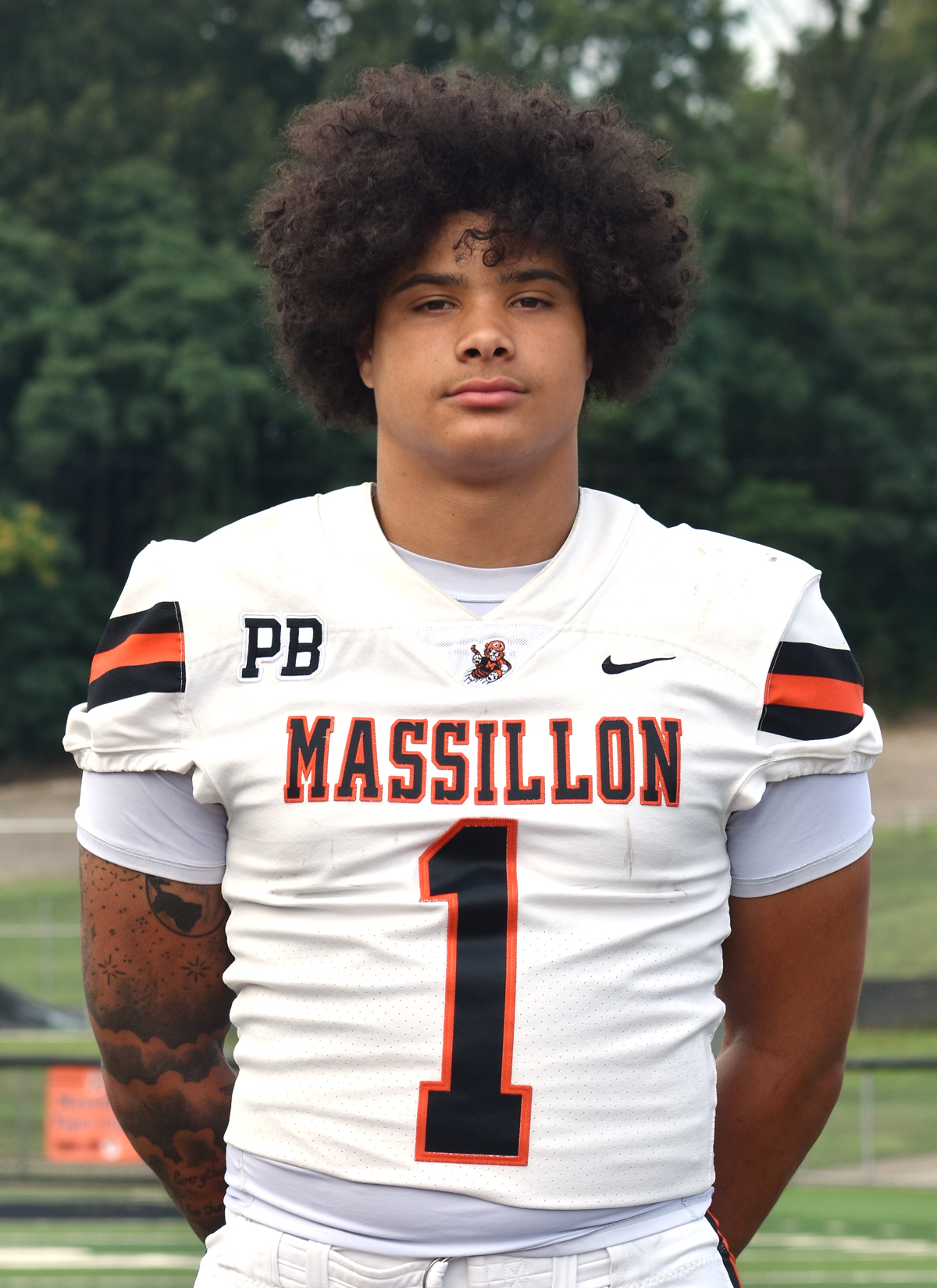
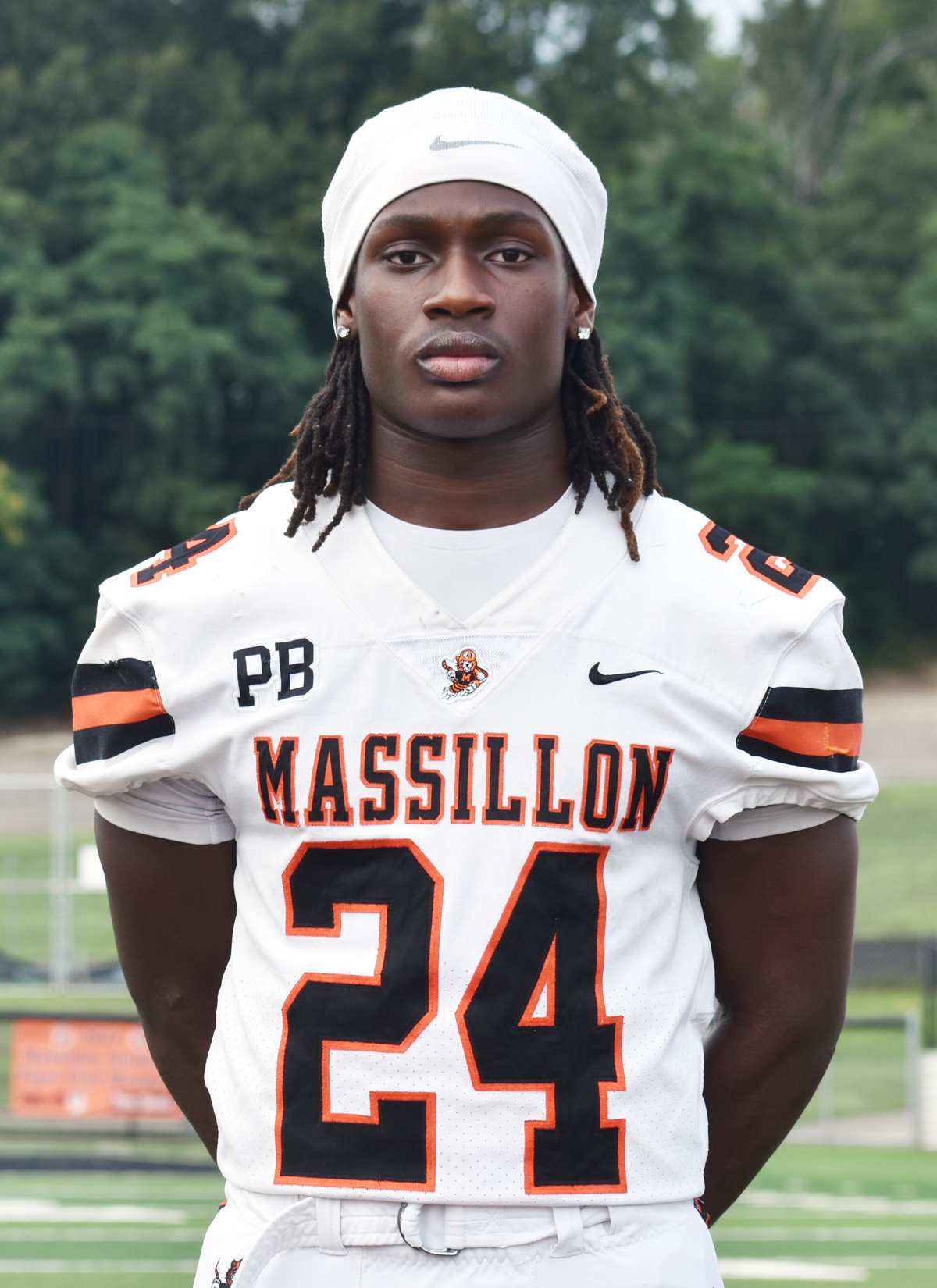
Against the Stallions, the mismatch was found on the lines, where the Tigers outweighed the DeSales front-3 by 50 pounds a man. So, the plan was to run the ball. And it worked as expected, with the offensive line opening holes all night long and with the 2-headed monster of running backs Savior Owens and Anthony McMullen combining for 32 carries, producing 303 yards and five touchdowns, with an average of 9.5 yards per attempt. That, even with the Stallions loading the box with up to eight defenders in their cover-3 alignment. Massillon ended up scoring on seven of its ten possessions, while punting just twice. The tenth was the boggled trick play that resulted in a fumble and TD return by the Stallions. One bad play out of 44, OK then.
Defensively, the aggressive Tiger defense completely grounded the DeSales rushing attack, limiting them to just 54 yards in 21 attempts. To control the Stallion’s short passing game Massillon brought the safeties up closer to the line on most plays and often just matched up with the receivers without a safety. The end result was that, although highly-touted quarterback RJ Day did complete 13 of 26 passes, it was for just 125 yards and one touchdown, that occurring during the running clock portion of the game. Day also threw a pair of interceptions.
The Tigers were hoping to get a quick start after receiving the opening kickoff. But a third down bomb from Patterson to Gio Jackson, who had beaten his defender by a couple steps, was just overthrown by a few inches. Following a 3-and-out by DeSales, Massillon took over at midfield. From there it took just three plays to tally the first points, when Owens threaded the secondary on a 22-yard run. The drive was kick-started with a 36-yard run by Owens.
The next possession was more traditional as Massillon ground out a 14-play, 92-yard drive, with each play on the ground, while picking up six first downs in the process. The final deed was done by McMullen with a 2-yard run up the middle. Unfortunately, Mateo Herrera missed his first PAT try of the year due to a low snap.
Later in the second quarter the Tigers were on the march again after DeSales fumbled the ball at their own 40 on a hit by Sam Doussous and a recovery by Isaac Maxheimer. Owens ran for ten, then for nine, then for 21 and a touchdown, making the score 20-0.
Then came an interception by a leaping 285 lb. Zay-Shawn Murray at the Stallion 37 to squash a screen pass attempt. Three plays later the score was 27-0, following a 16-yard pass to Deontay Malone and two runs by McMullen of 8 and 13 yards.

Then came a wild part of the game. With seconds left in the half Day attempted a deep pass. Only, it was overthrown and tracked down by Malone at the 13. After eluding a several potential tackles near the goal line he crossed the field and headed up the sidelines, not being caught until he had reached the 44. Just 15 seconds remained on the clock. Time for one more score. The call? A trick play. Owens lined up at wide receiver, which of course immediately tipped off many Massillon fans. After taking a handoff while in motion left he reversed and threw back to Patterson for a halfback pass. Only, the backward pass fell to the ground well short of the target and was immediately scooped up John Hockaday, who returned it untouched for the Stallion score, closing the margin to 27-7.
DeSales failed to move at start the third period and put the Tigers on the march once again. It took five running plays to cover the 65 yards, with Owens scoring from a yard out. Again stalling without a first down, this time the Stallions botched the punt, giving Massillon the ball with a short-field at the 20 yard line. Three plays later Sebastian Harper went over from the three, sending the game into a running clock situation.
After that, DeSales finally found their offense, driving 80 yards in 7 plays, with Day connecting with Dax Middleton in the end zone on an 11-yard slant pass. During the drive Day completed all three of his passes for 52 yards. The TD halted the running clock, but not for long. That’s because the speedy Malone promptly returned the ensuing kickoff 97 yards for a touchdown, making the final score 48-14.
Owens finished the night rushing 18 times for 215 yards (12.1 ave.) and three touchdowns. McMullen had 14 carries for 80 yards (5.7 ave.) and a pair of TDs. Attempting just six passes, Patterson completed three for 34 yards. On defense Malone and DeVaughn Williams had seven total tackles each. In addition, the Tigers recorded 6 tackles-for-loss and a sack.
Photos by Marlene Kanipe
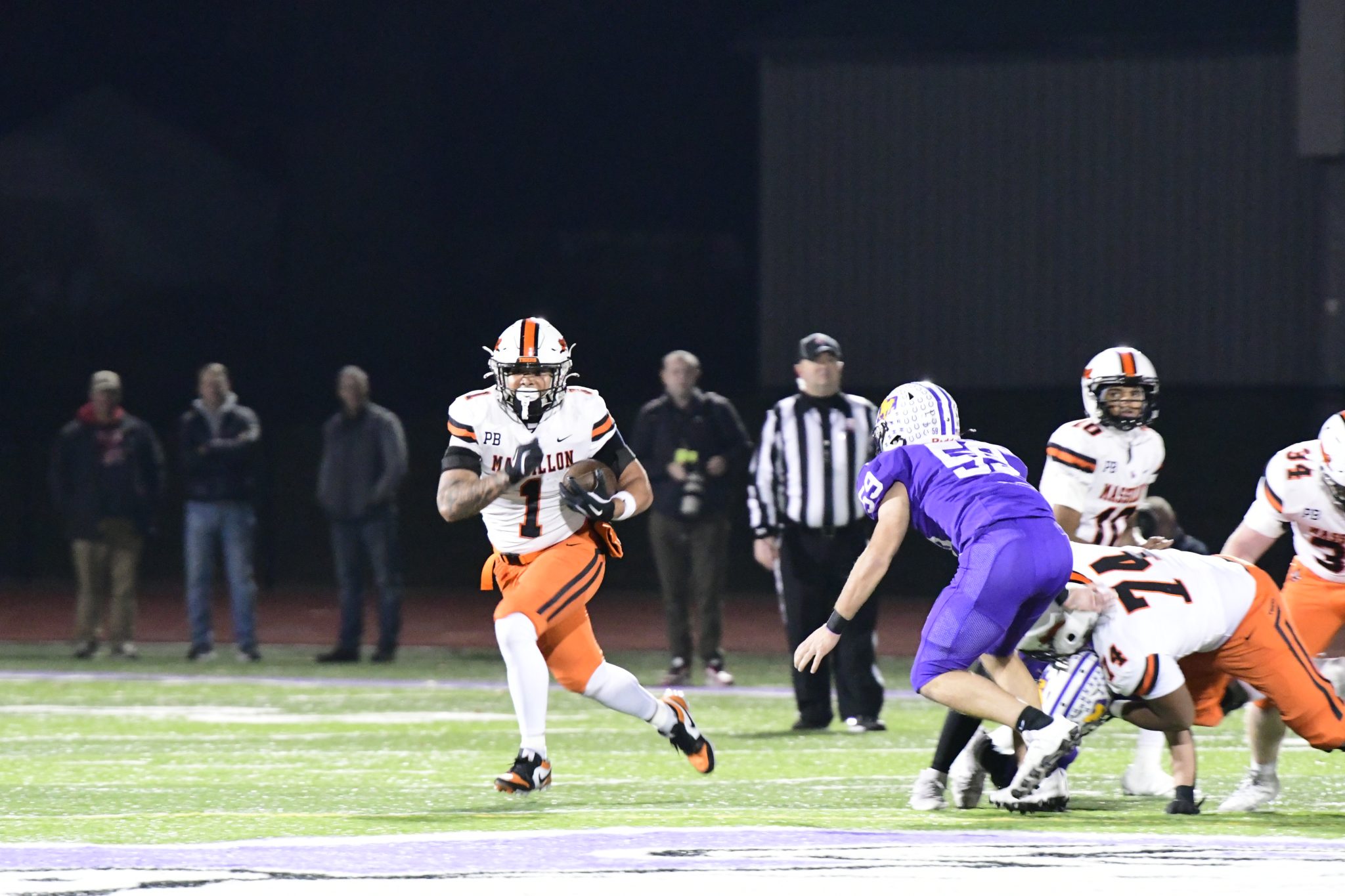
Savior Owens (1), Manny Patterson (10), Kevin Elliot Jr. (74), Will Hymes (34)
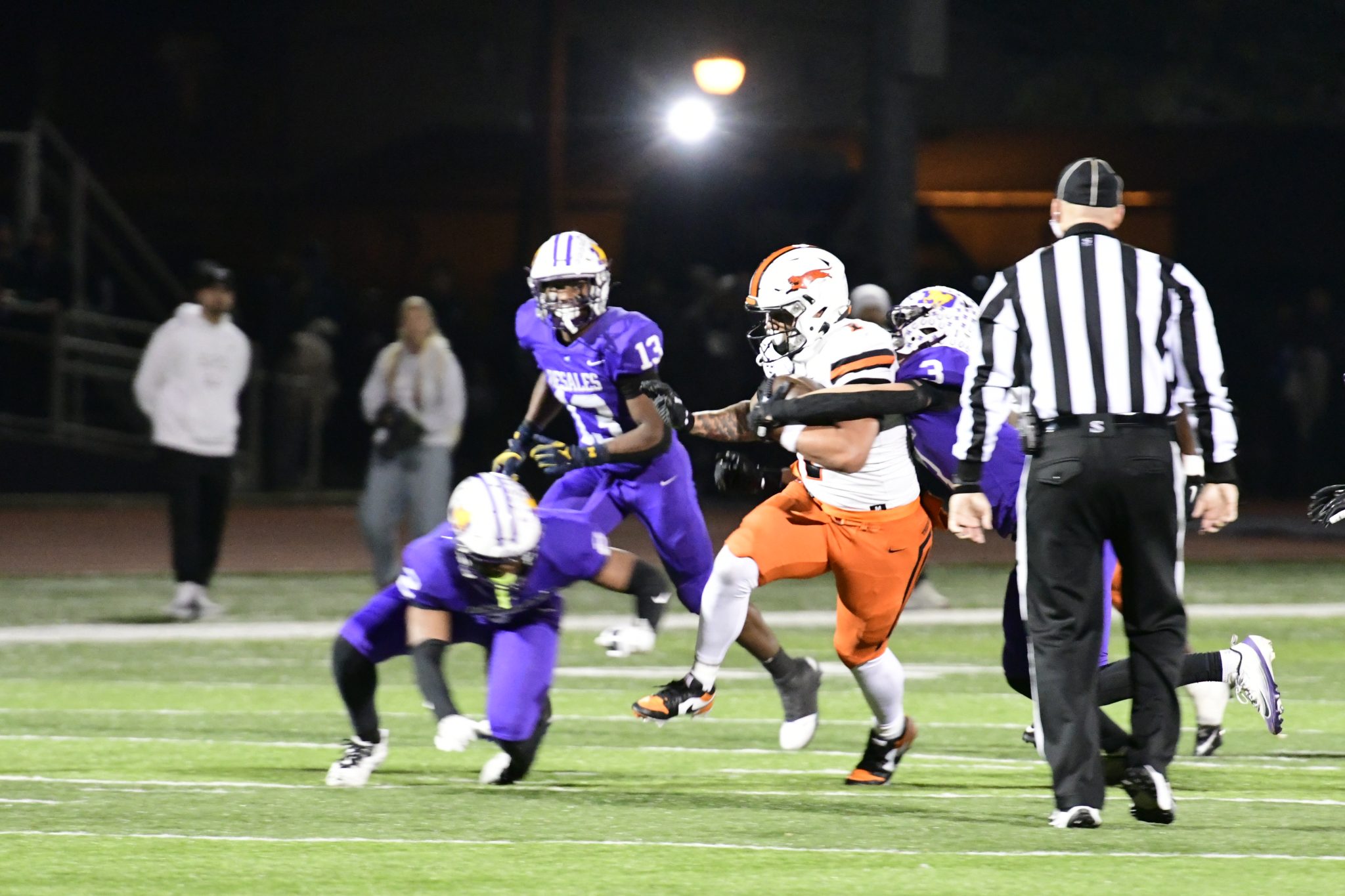
Savior Owens (1)
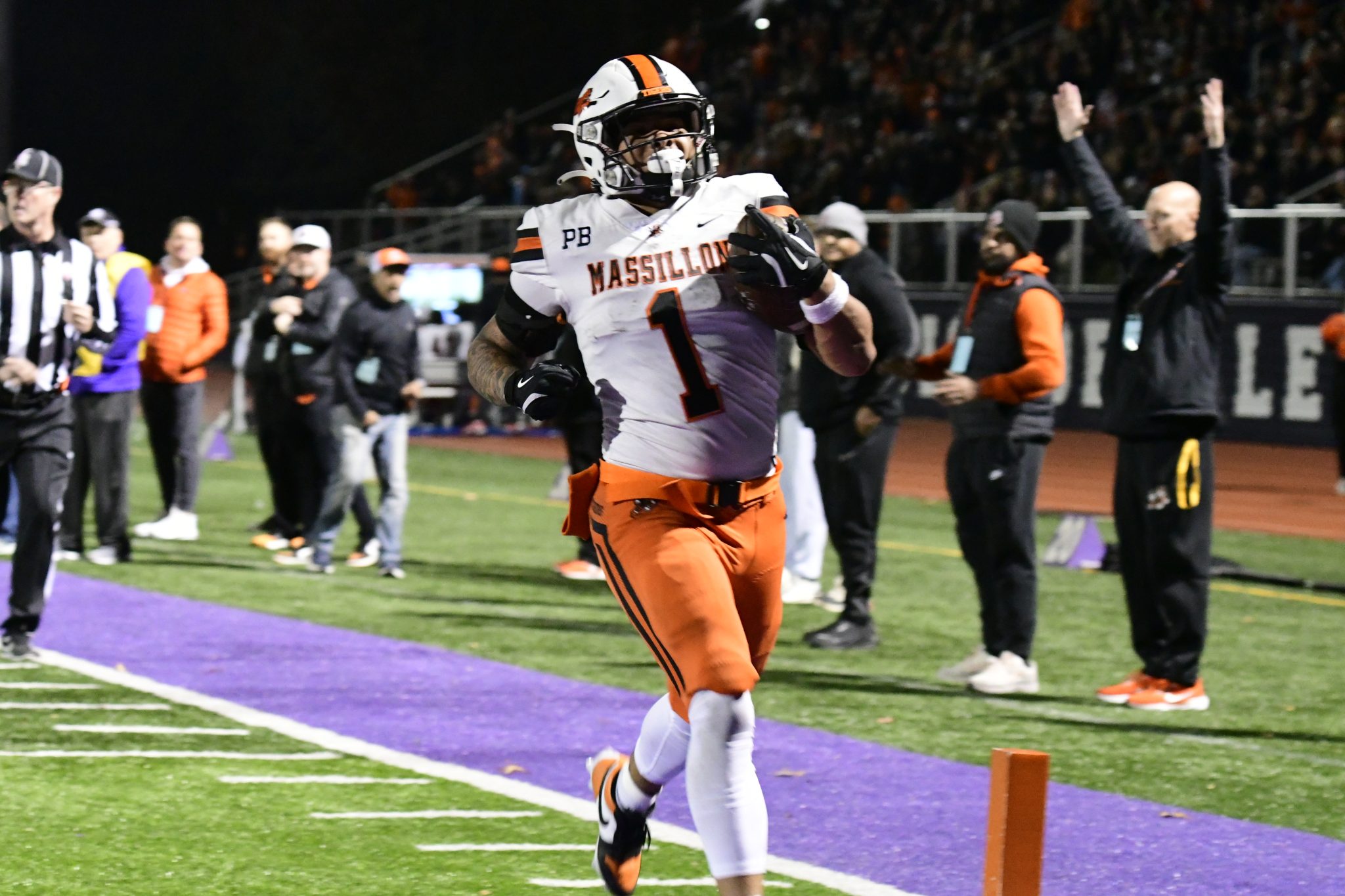
Savior Owens (1) with the score
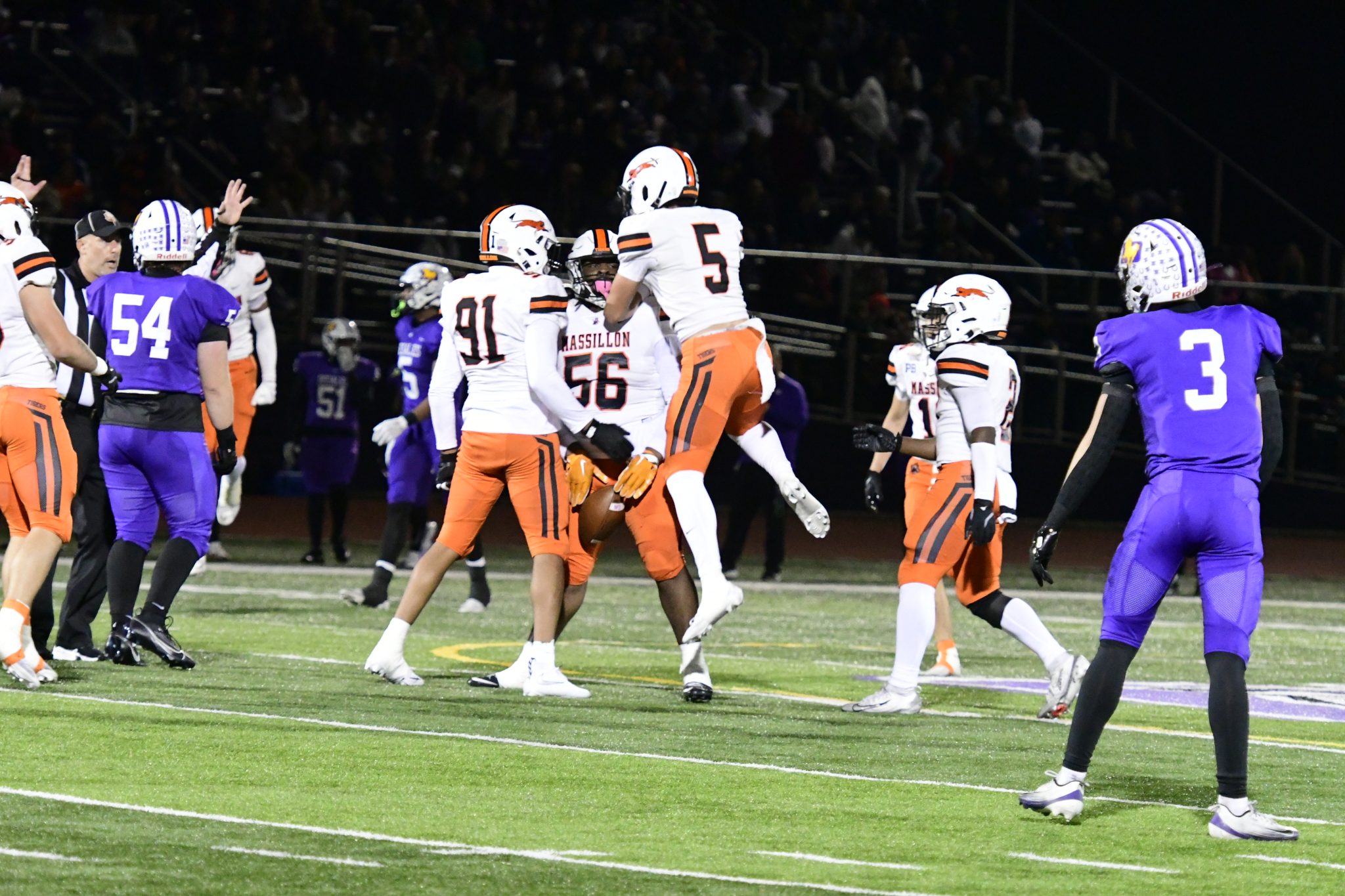
Celebrating the pass interception by Zay-Shawn Murray (56); Sam Doussos (91), Braylon Gamble (5), Noah Jenkins (16), Christian Culler (2)

Deontay Malone (6)
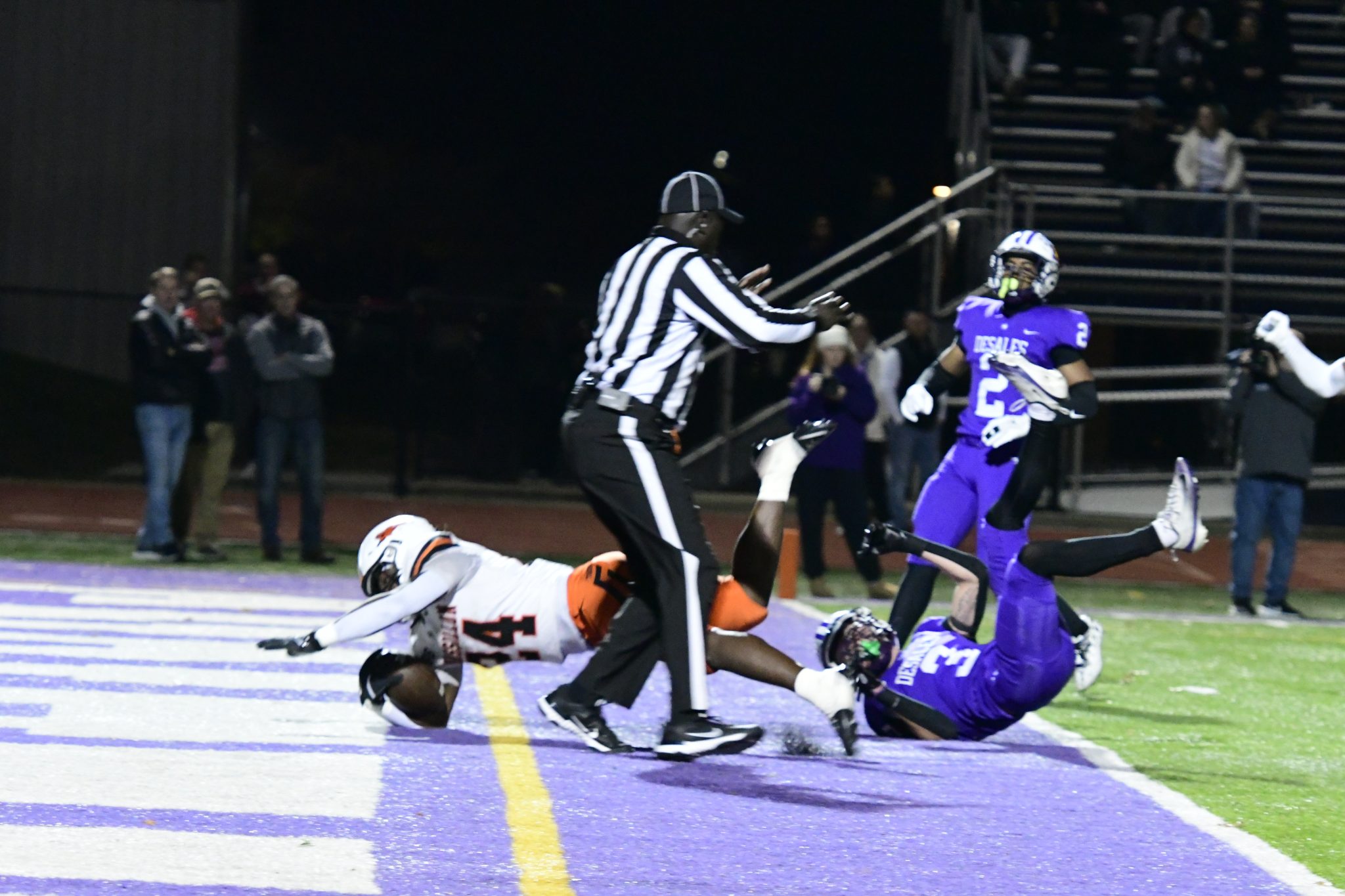
Anthony McMullen Jr. (24) plows through the defender for the score
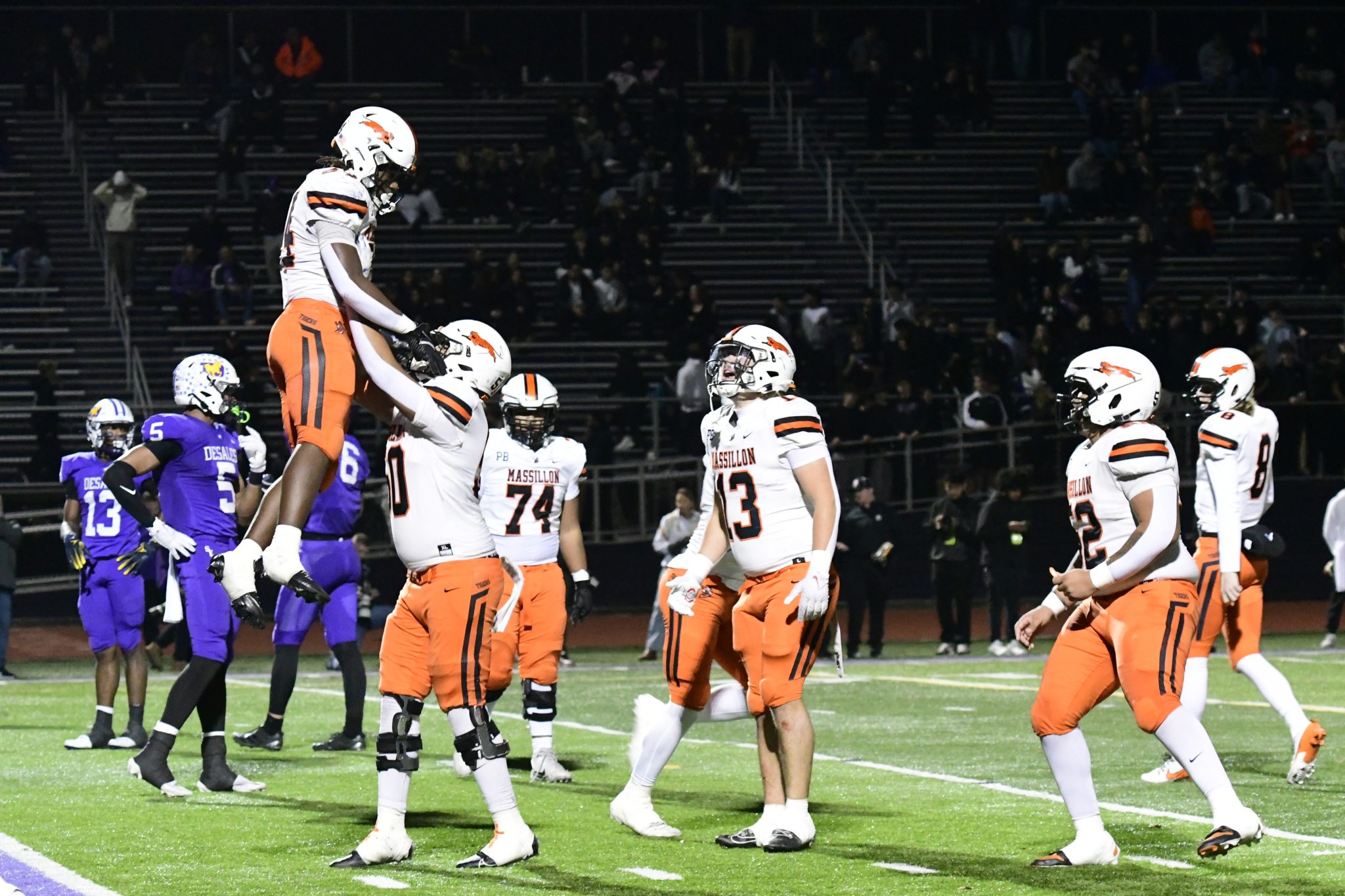
Celebrating the TD by Anthony McMullen Jr. (24); Marcus Garner (60), Kevin Elliot Jr. (75), Logan Allman (13), Dayvionne Floyd (52), Eli Moore (8)
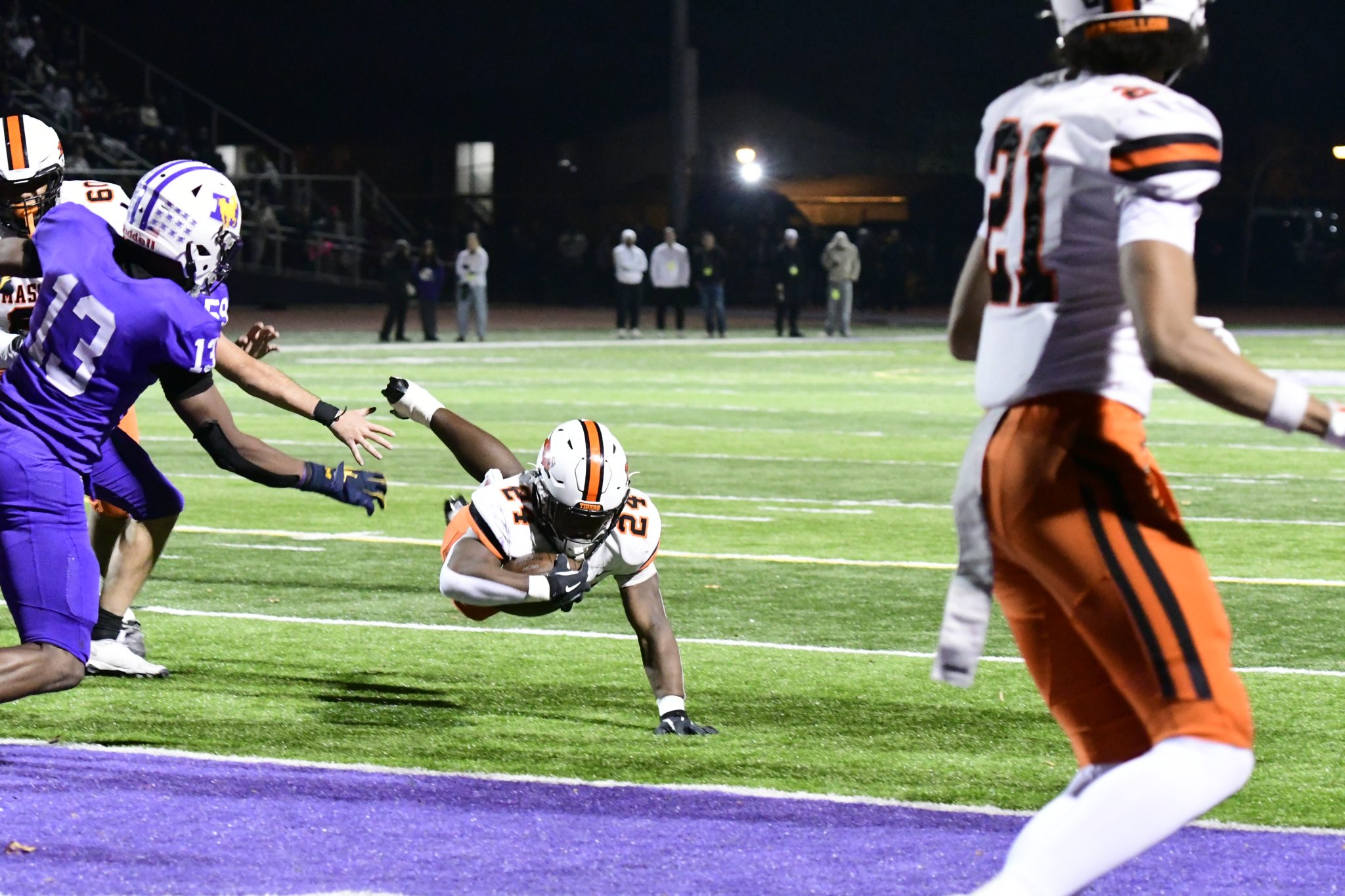
Anthony McMullen Jr. (24) falls just short of the goal line
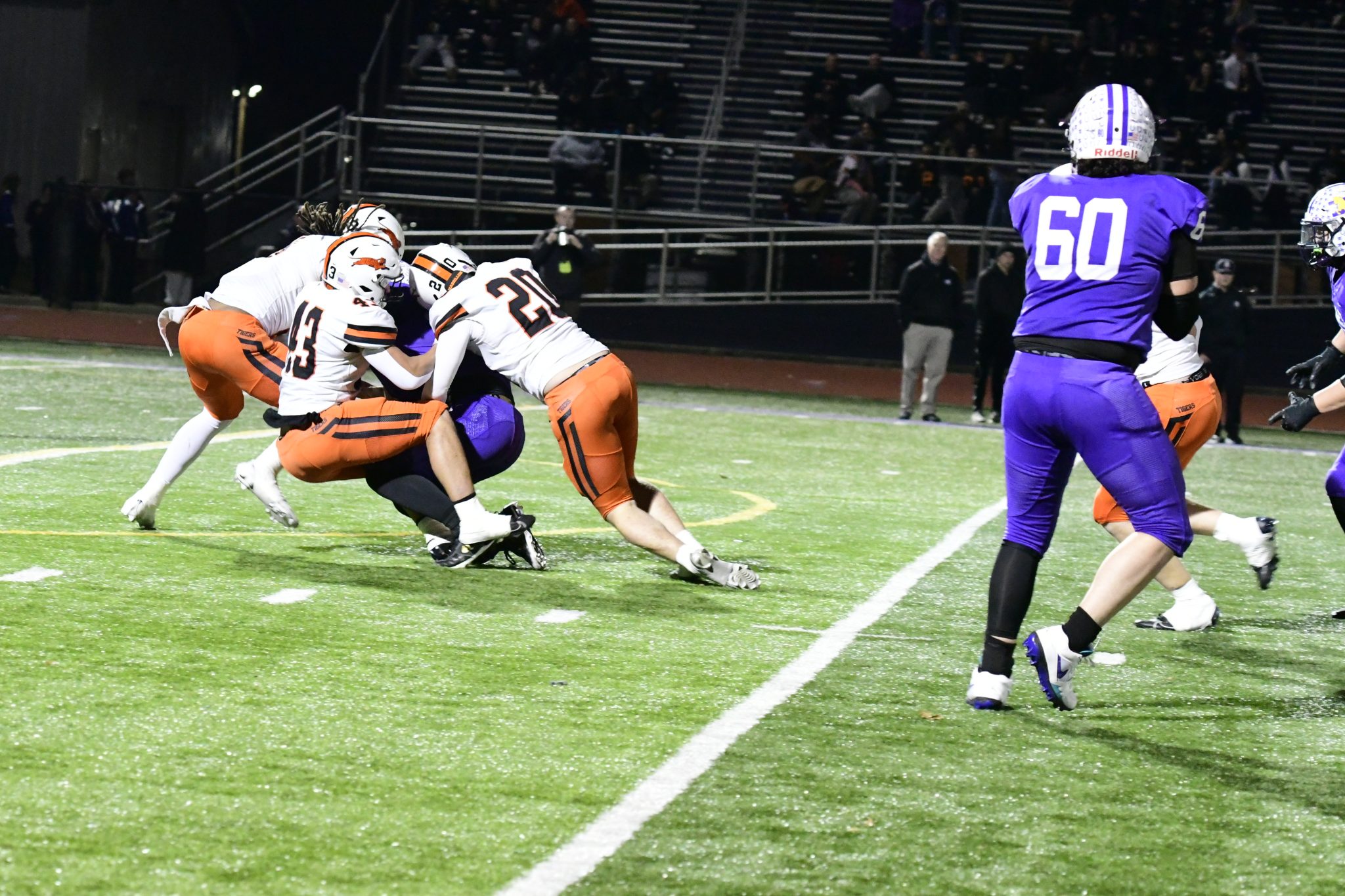
Quarterback sack by Ke’Aun Fowler (43); Isaac Maxheimer (20)
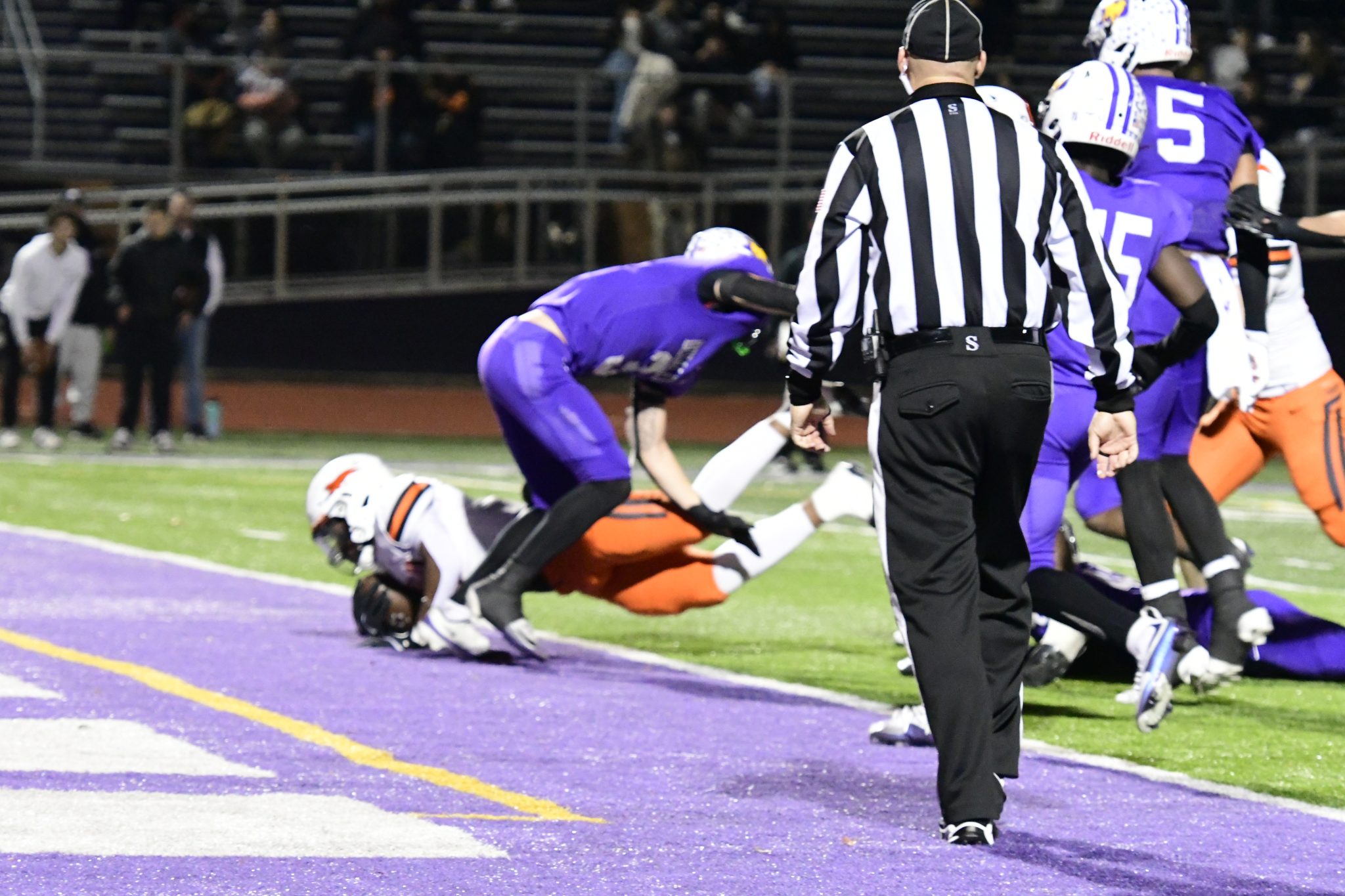
Touchdown

Deontay Malone (6) at the start of his 97-yard kickoff return.

Deontay Malone (6) headed for the end zone.
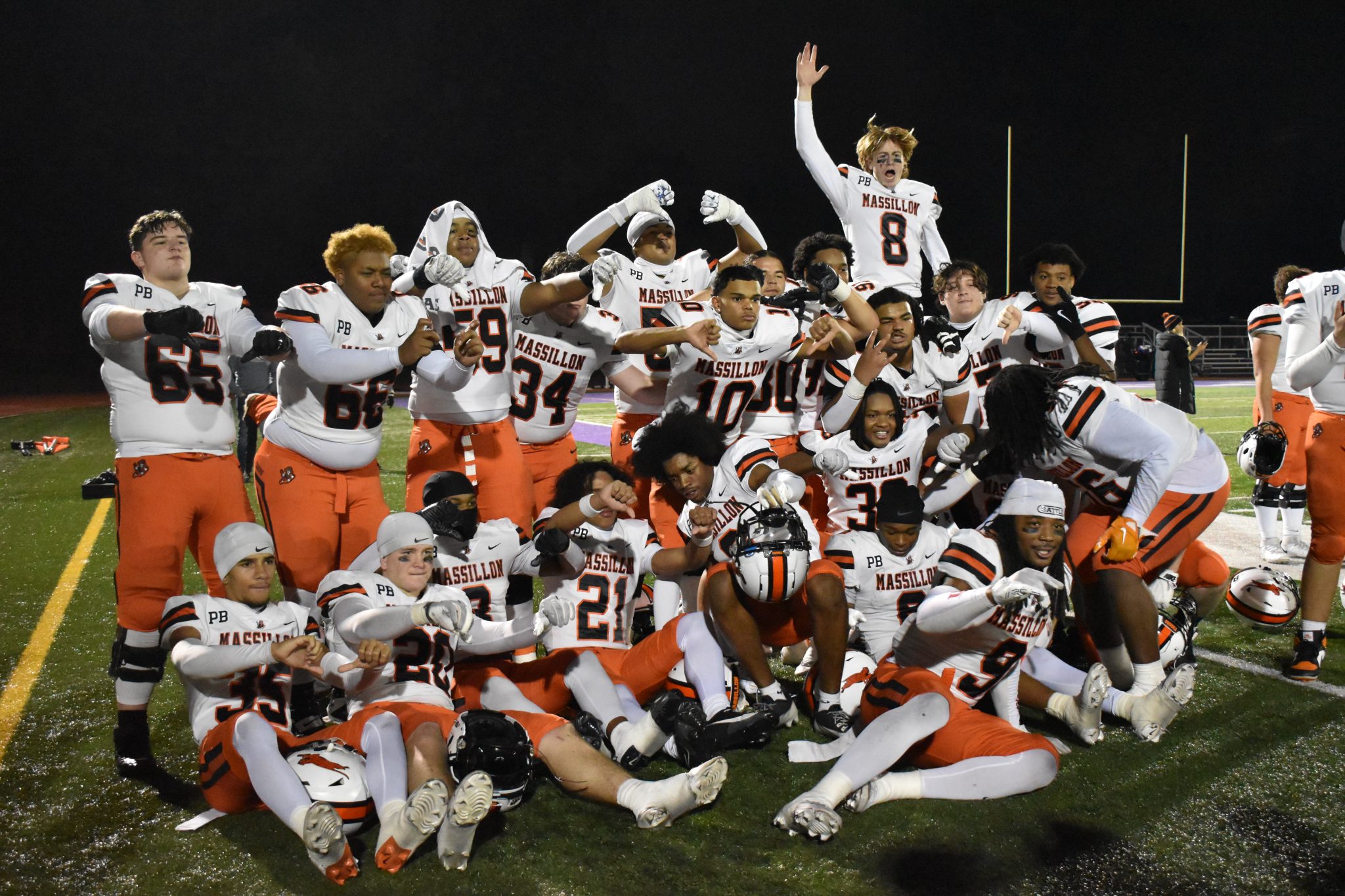
A well-earned victory! Off to the regional finals.


